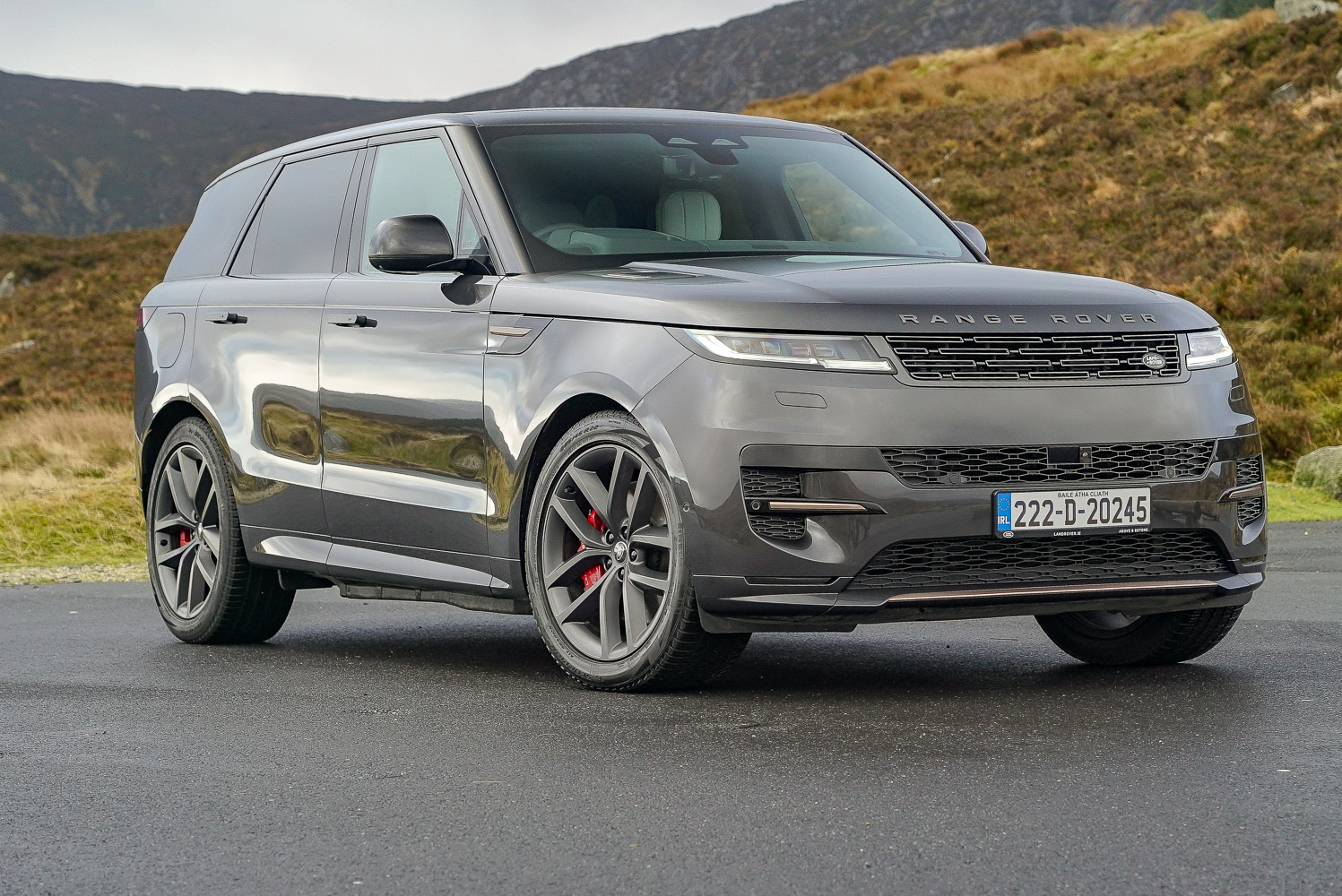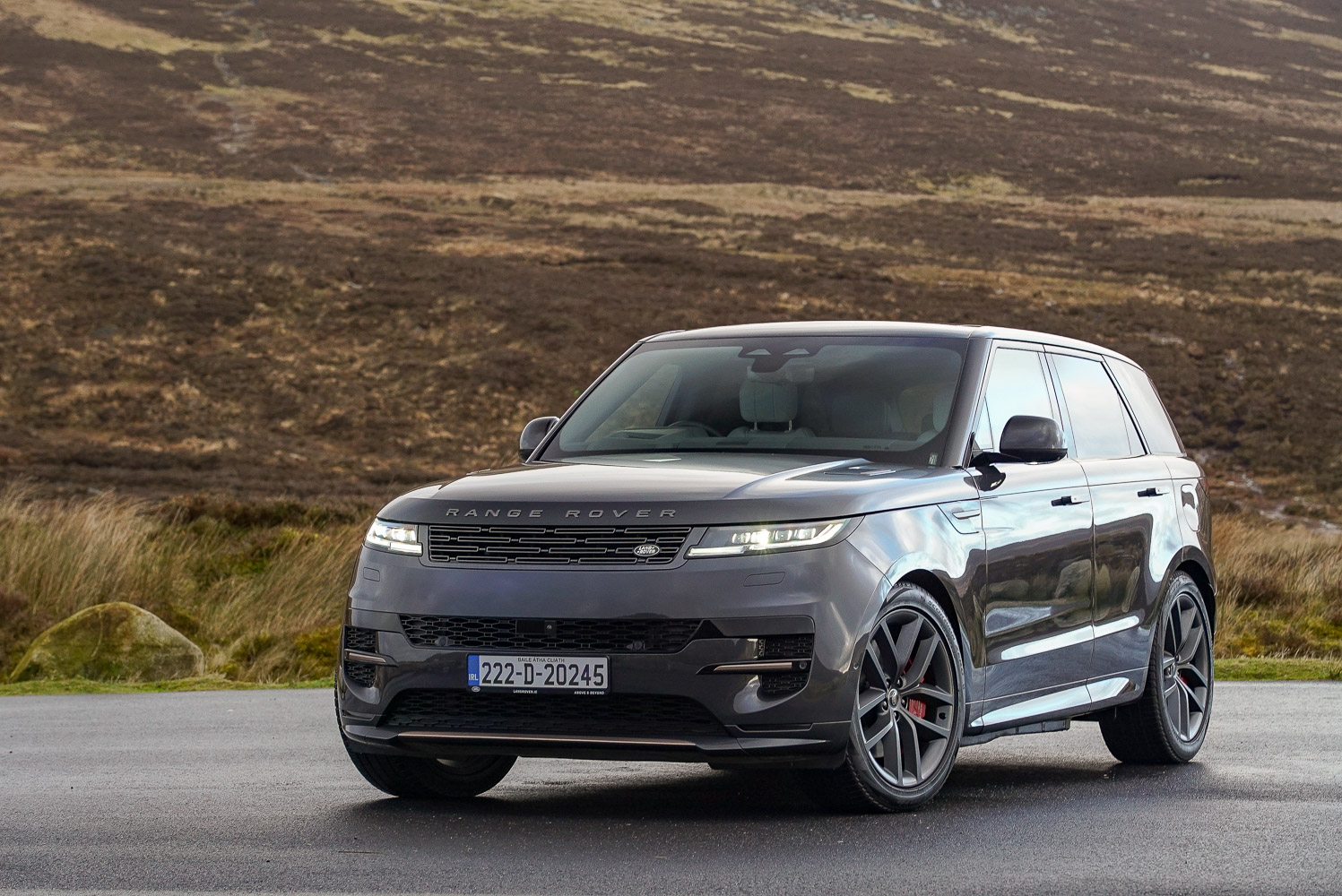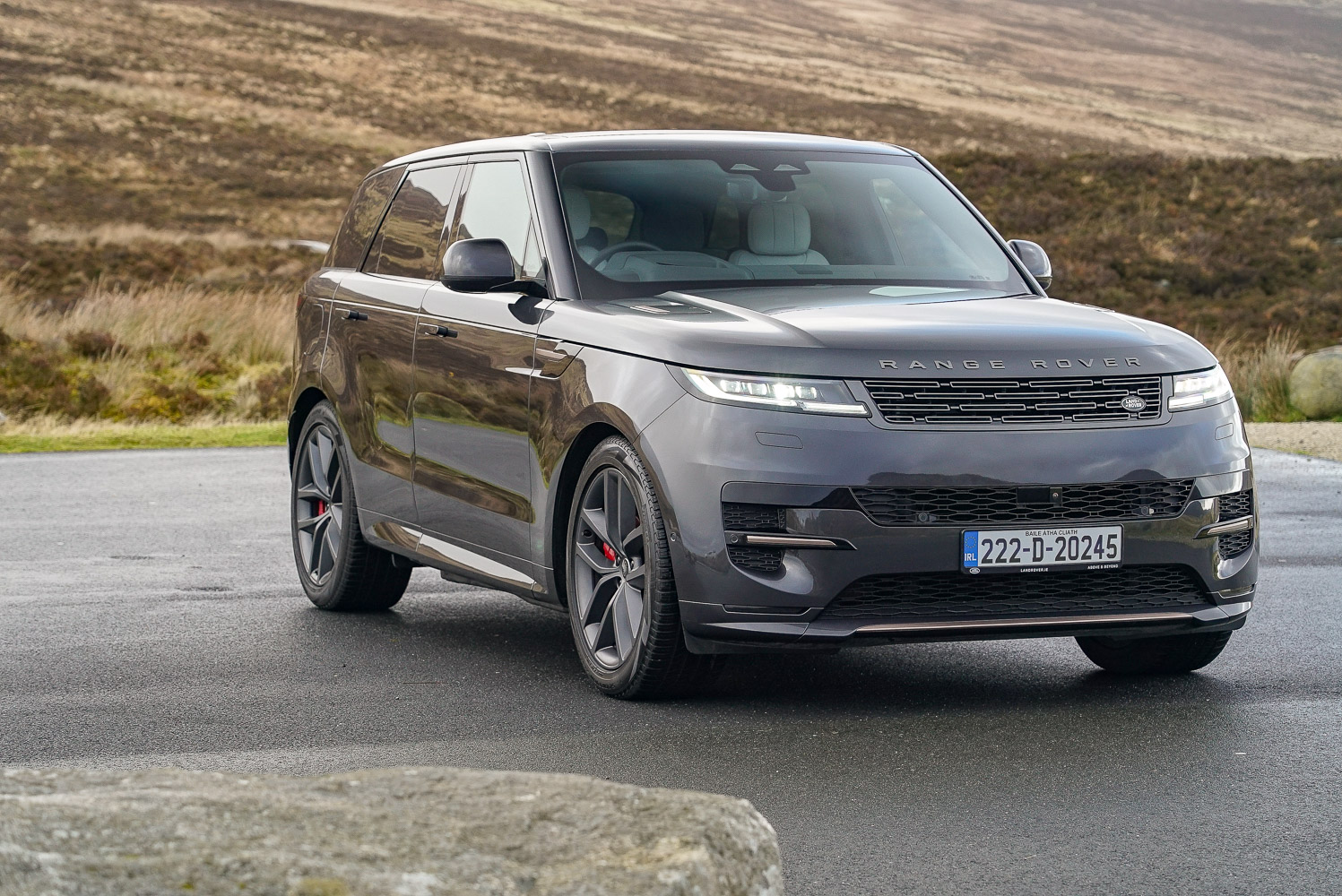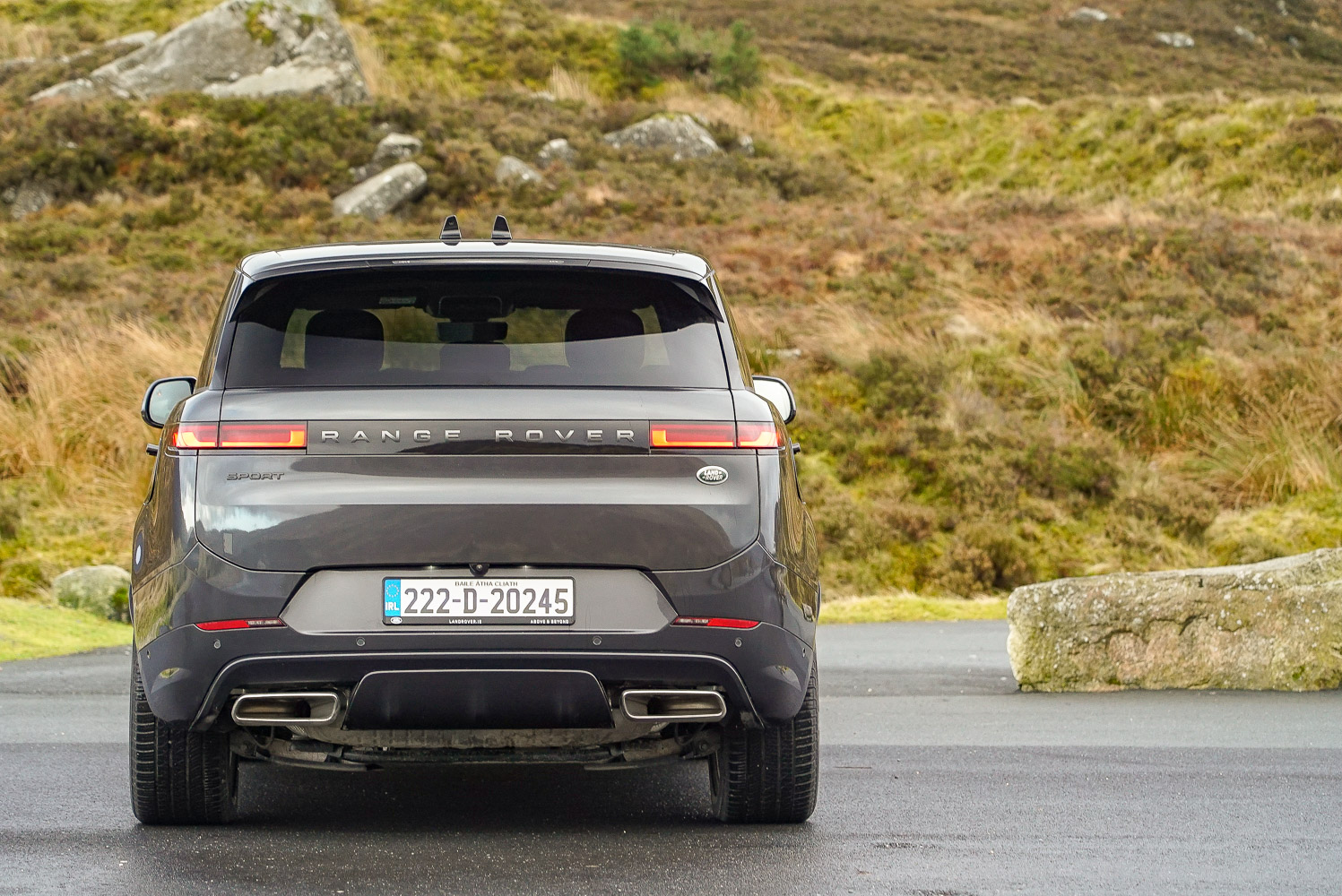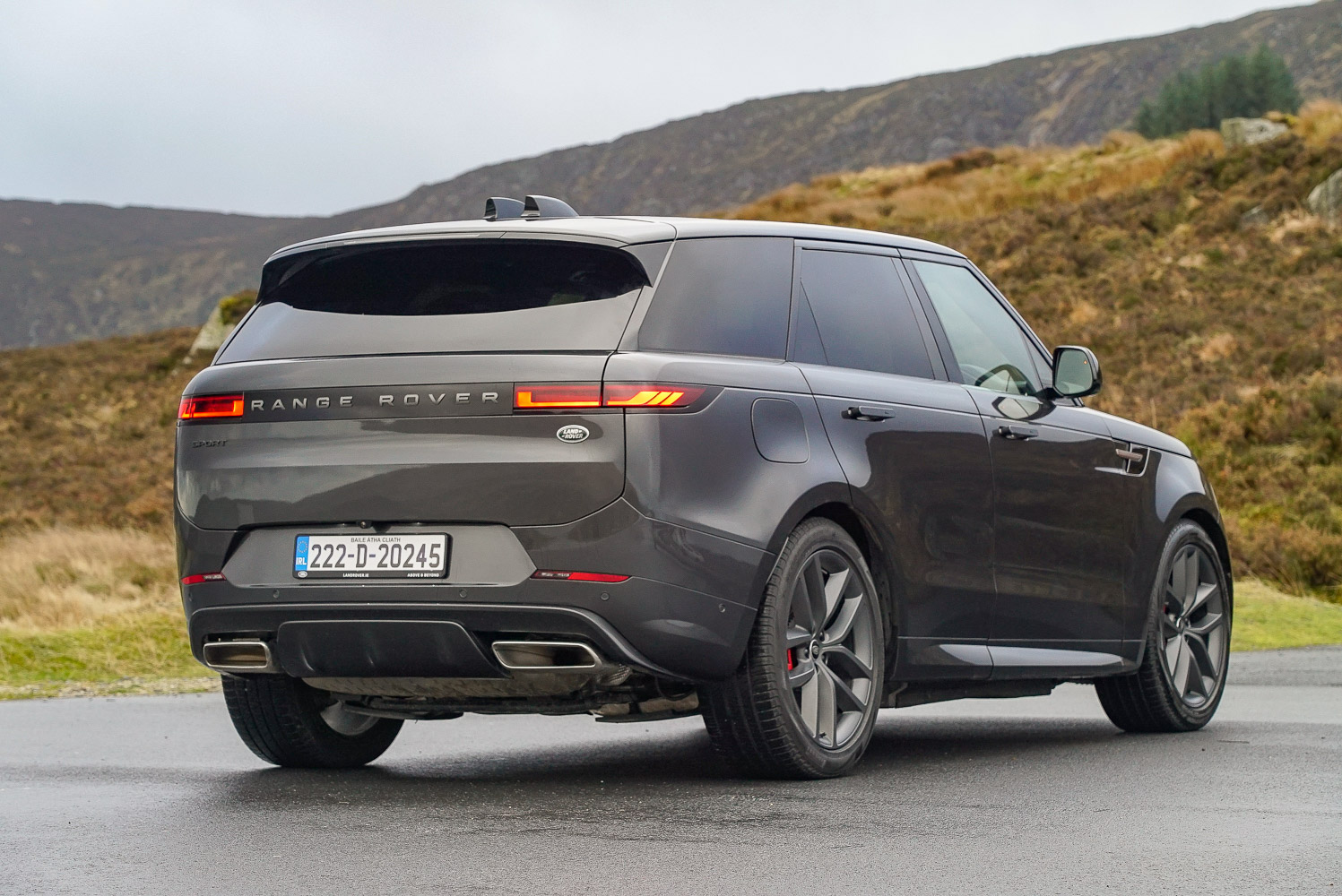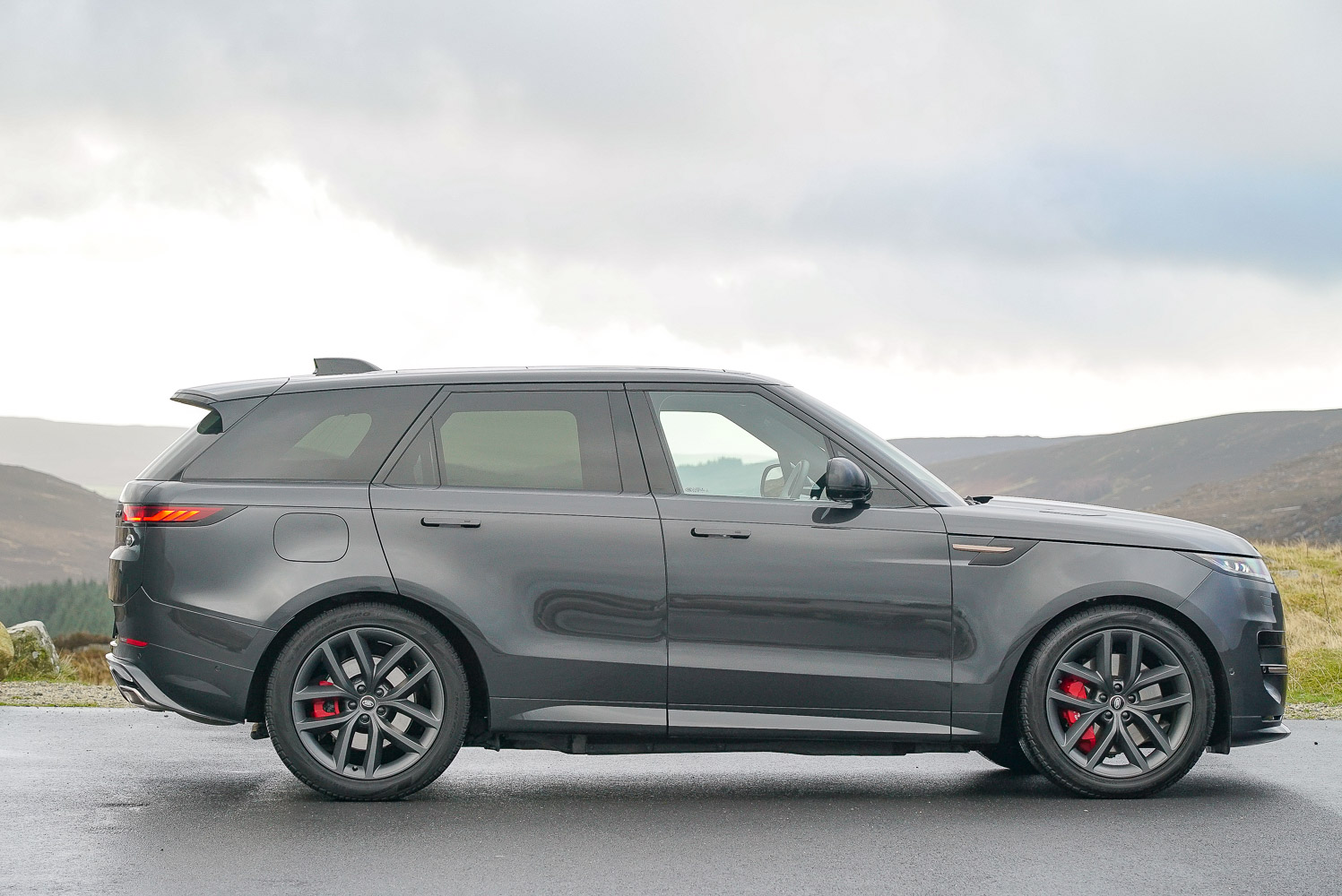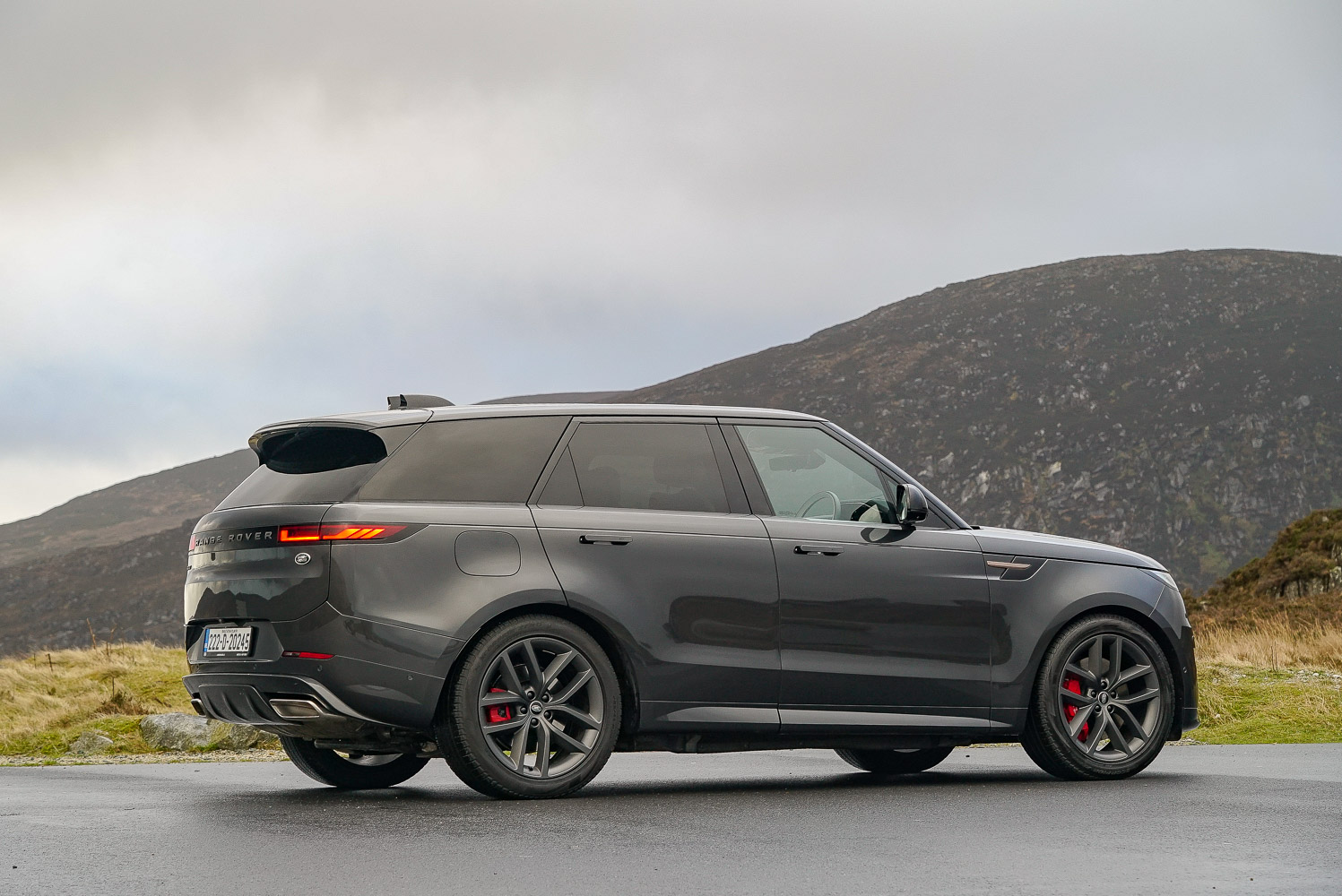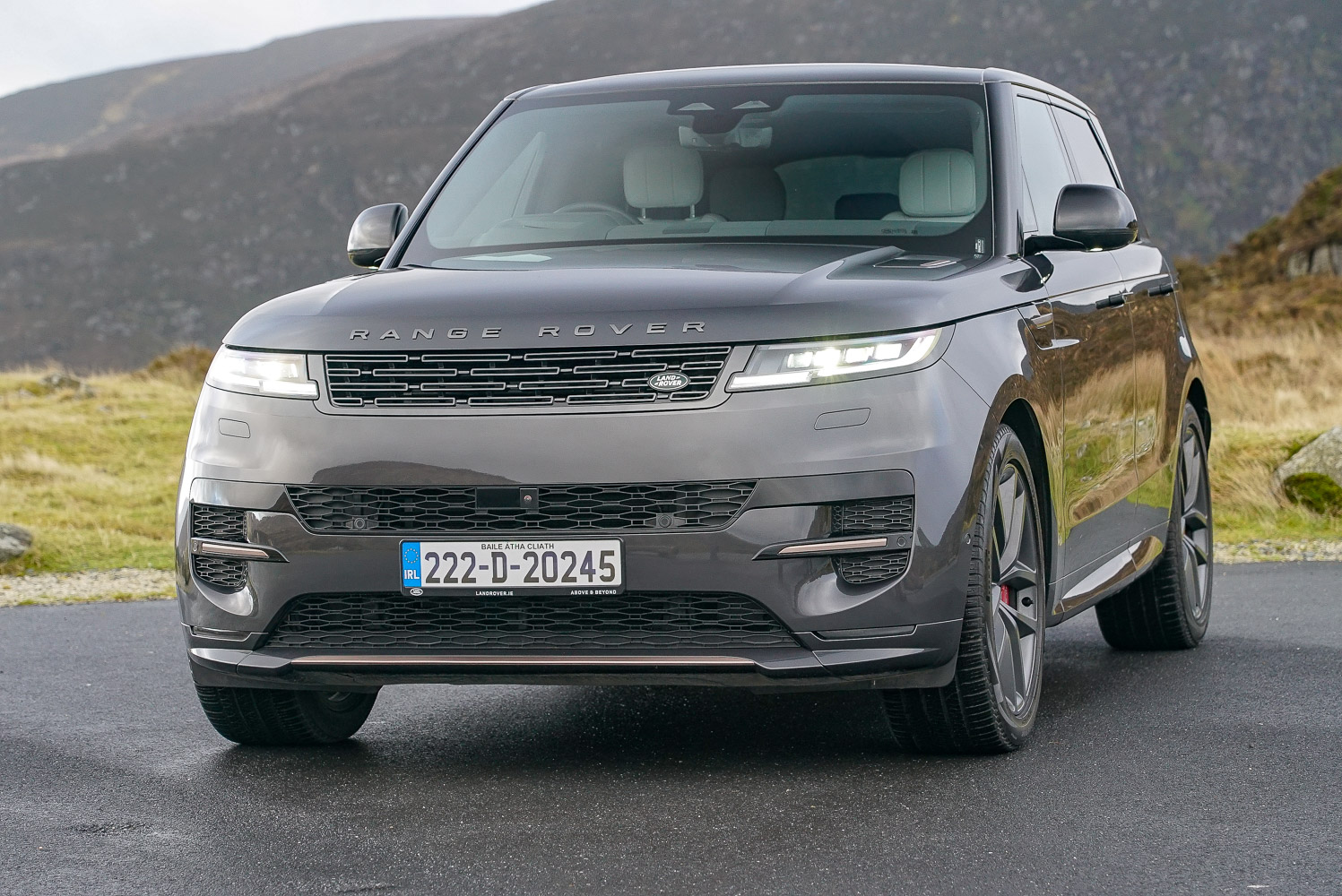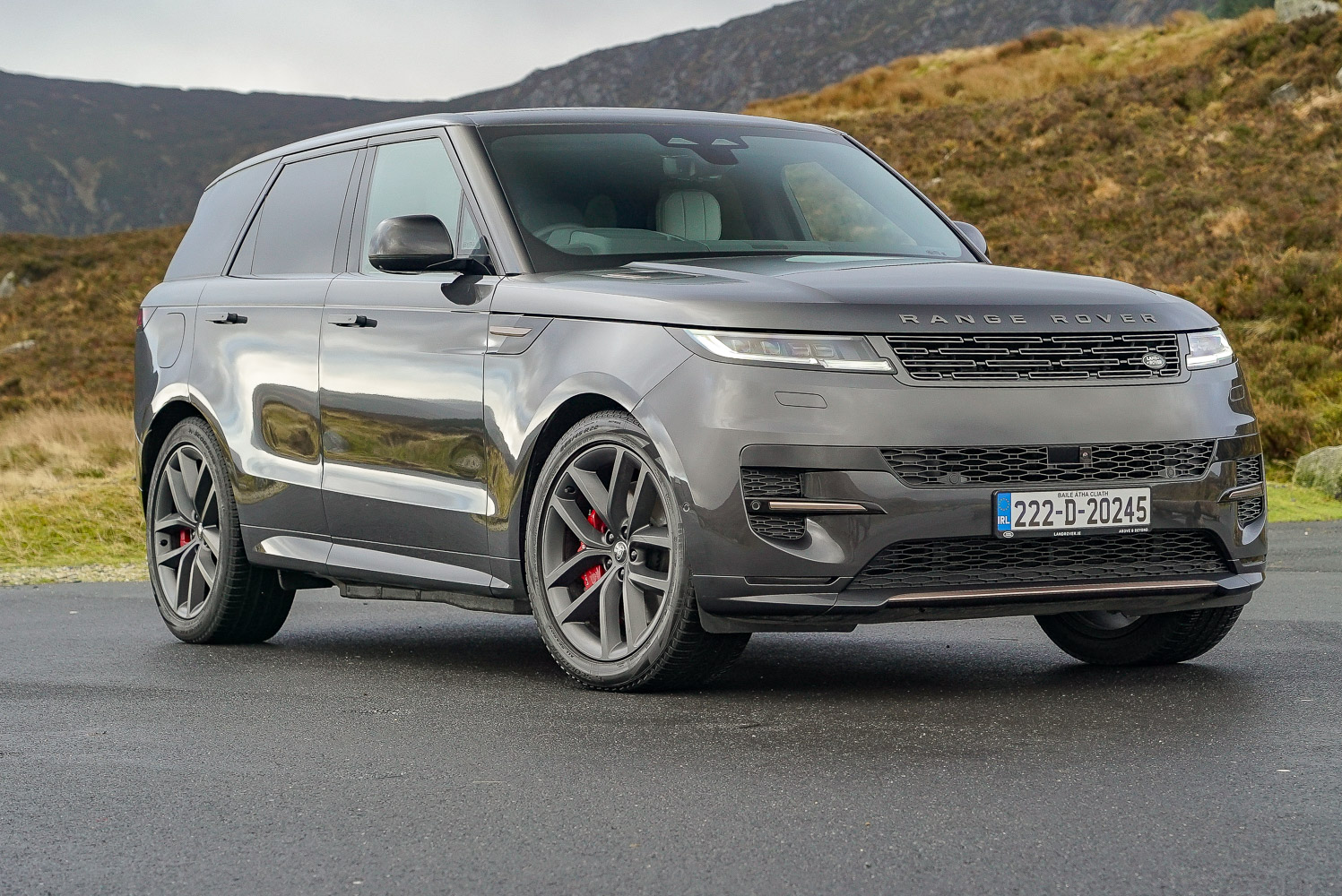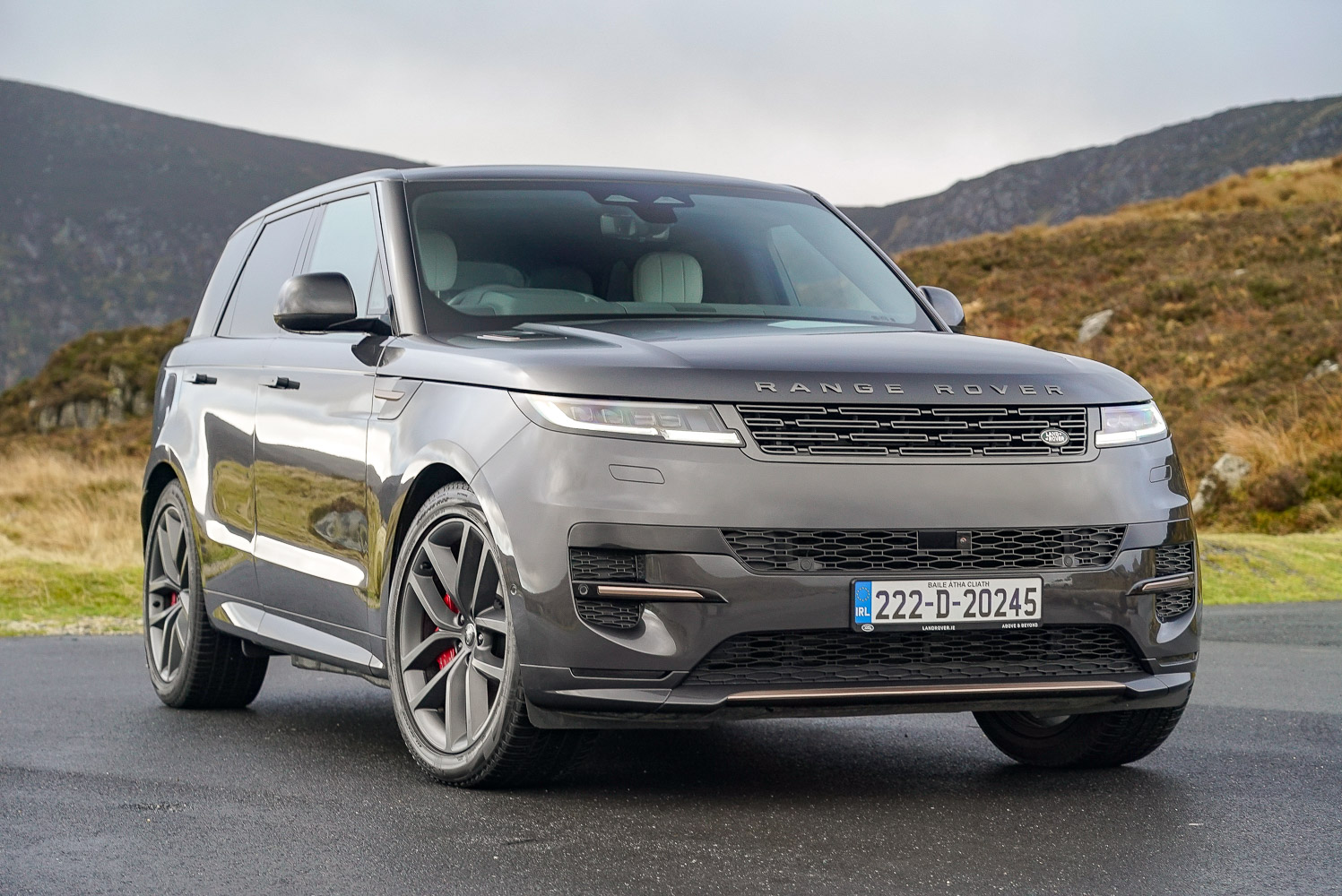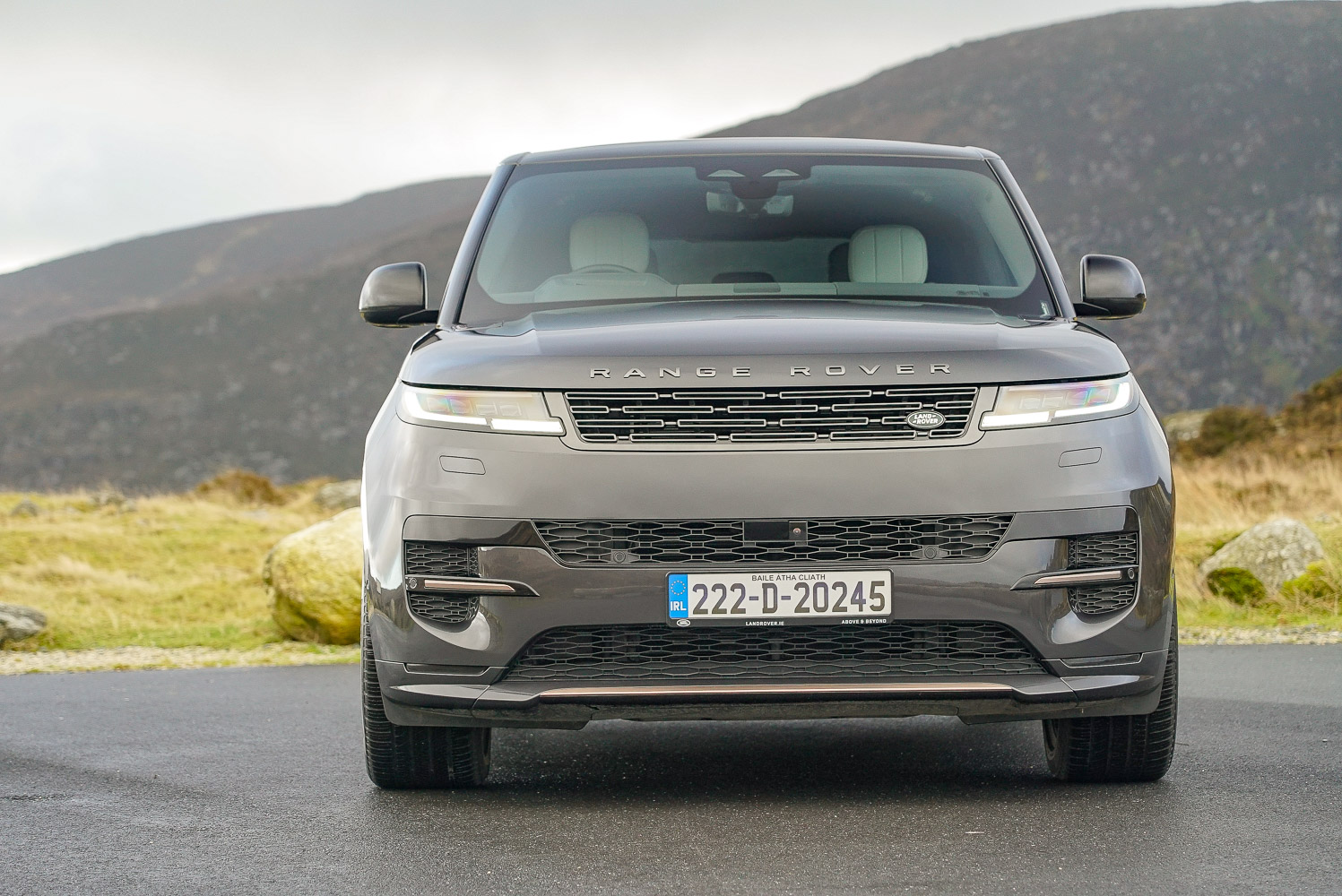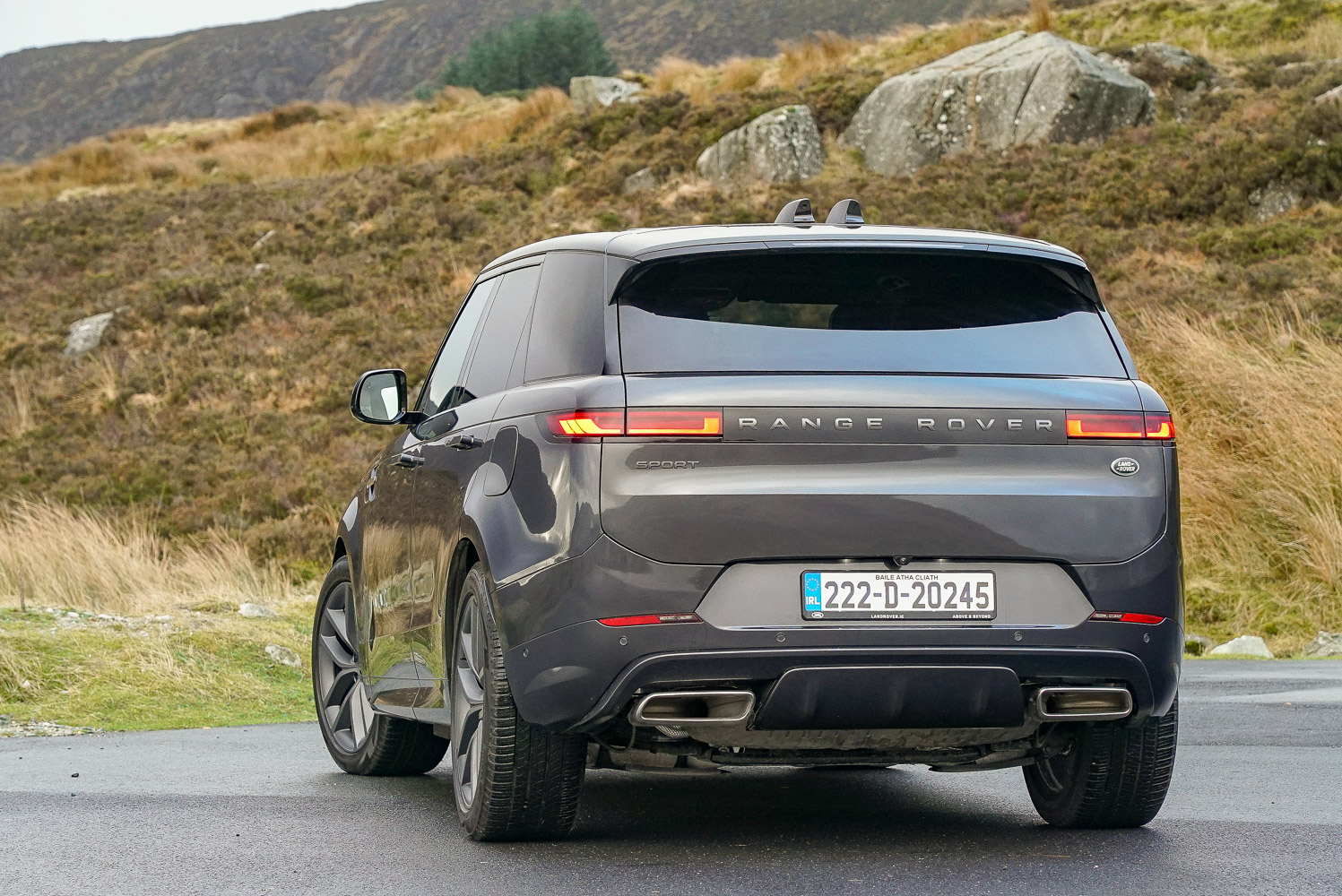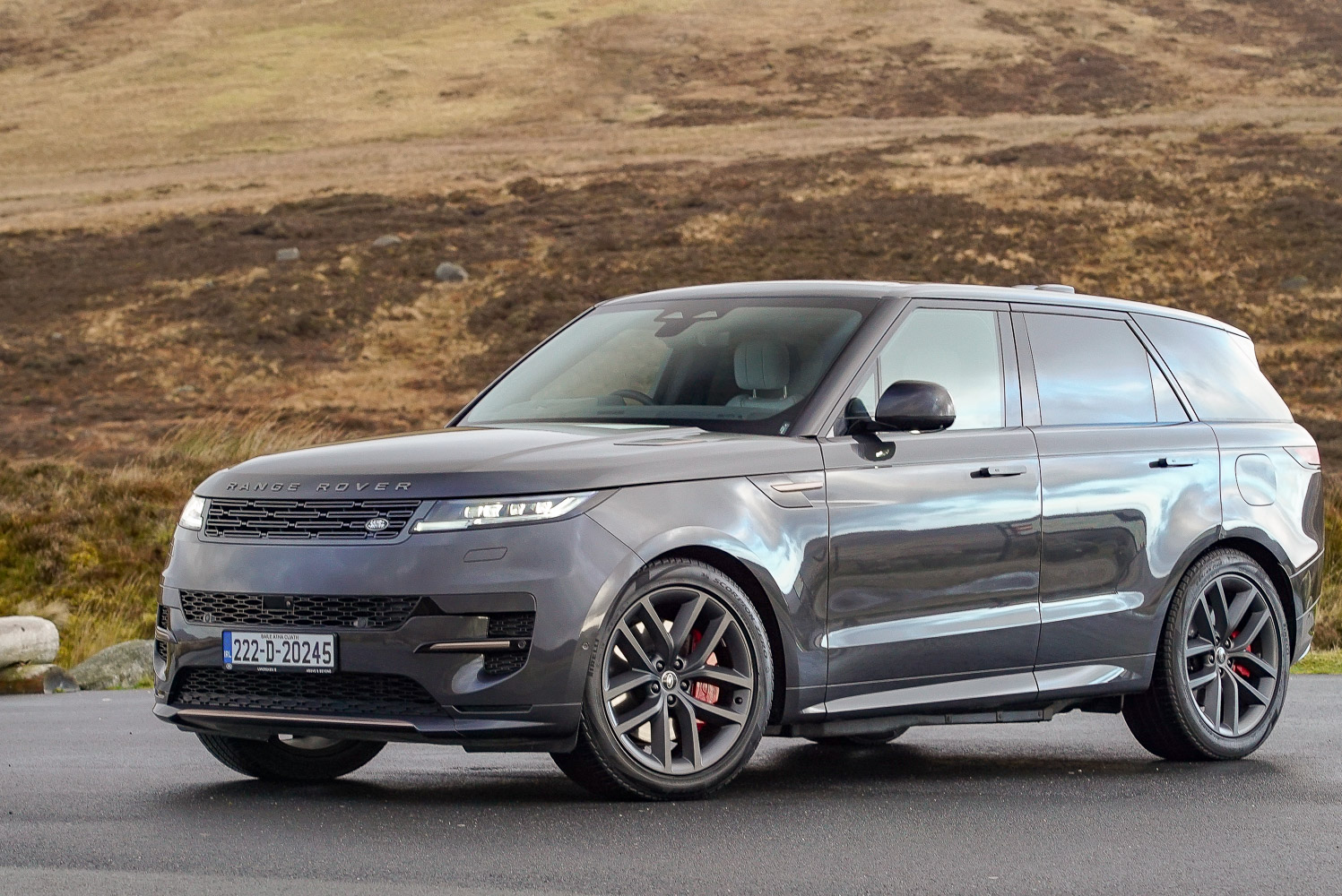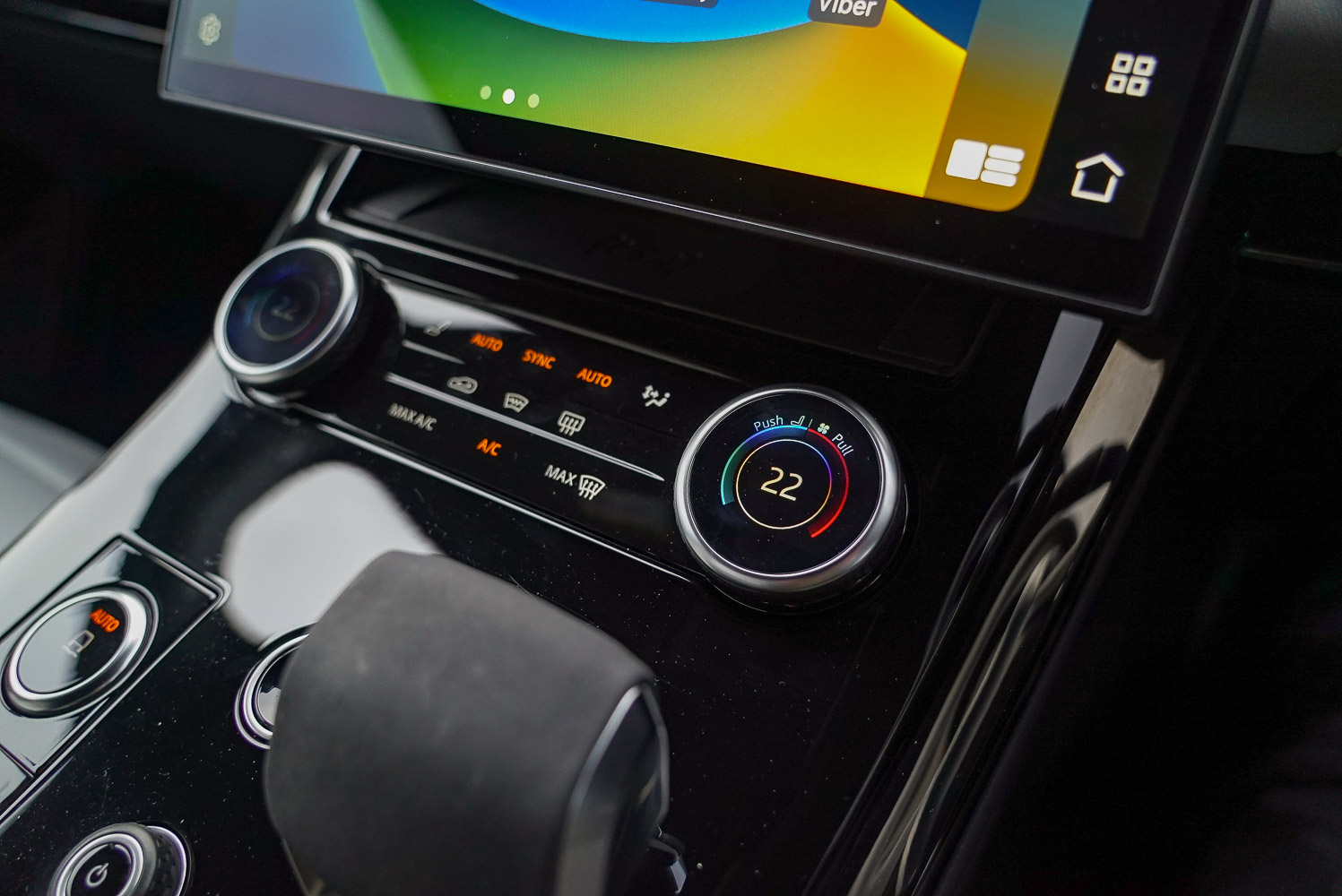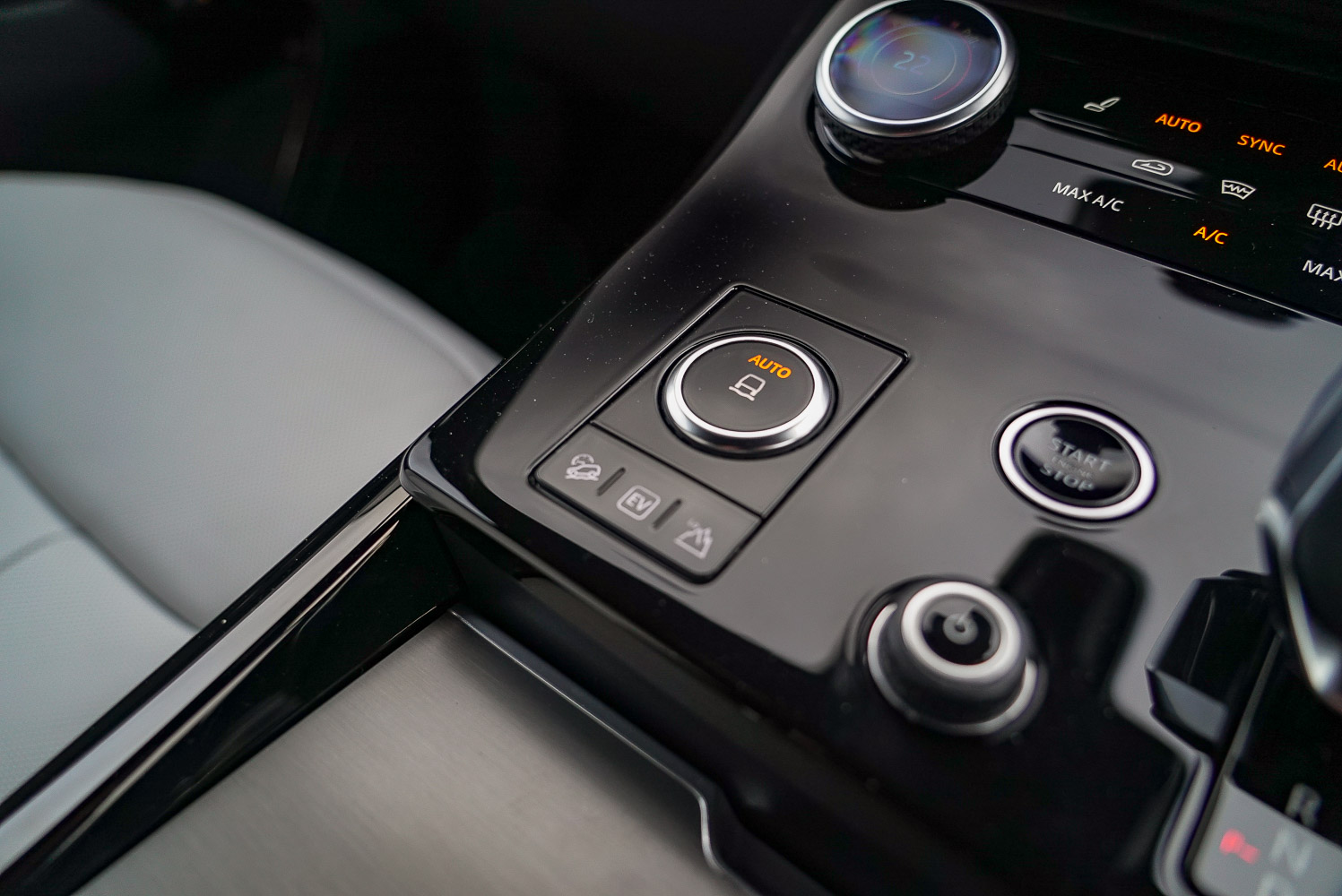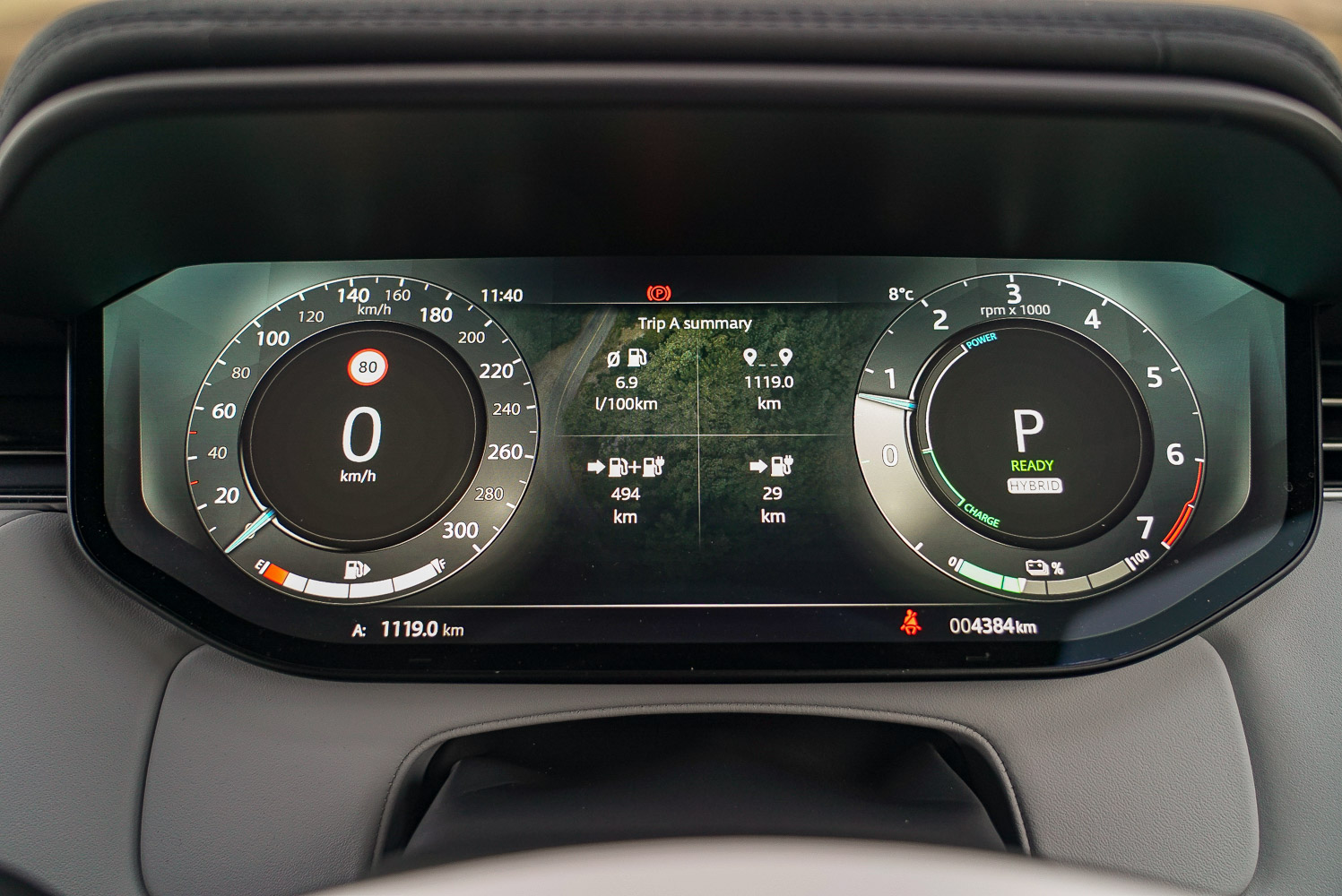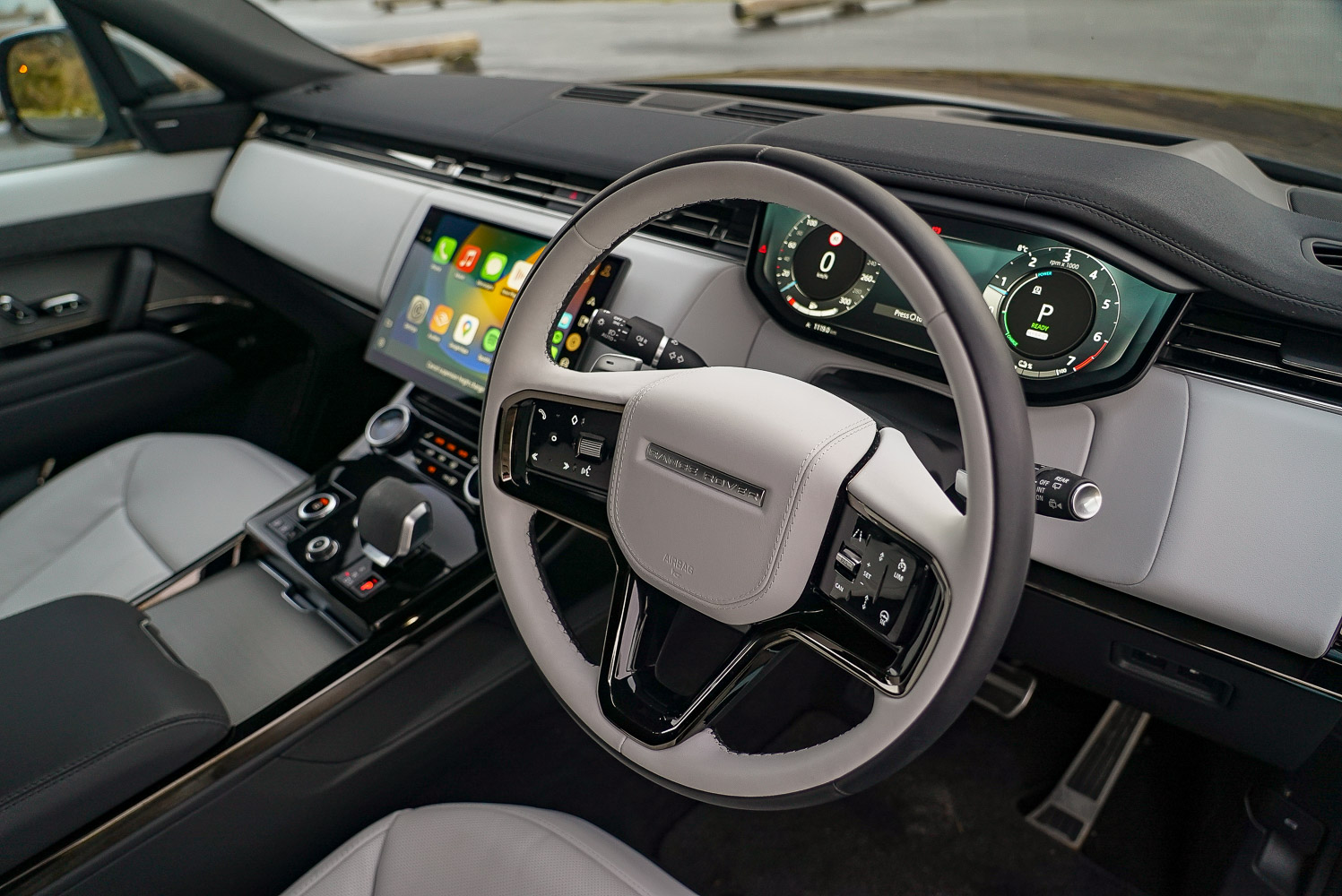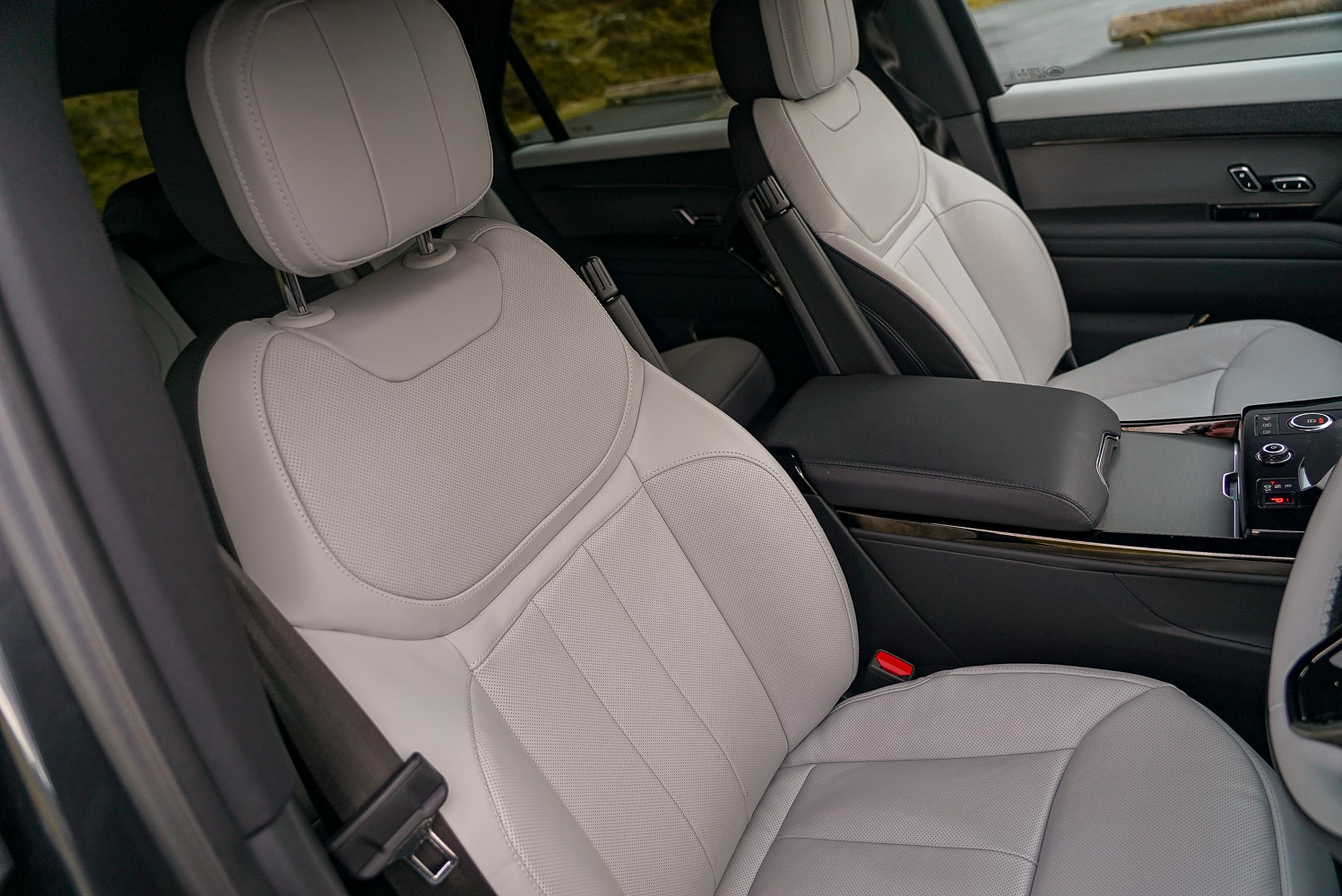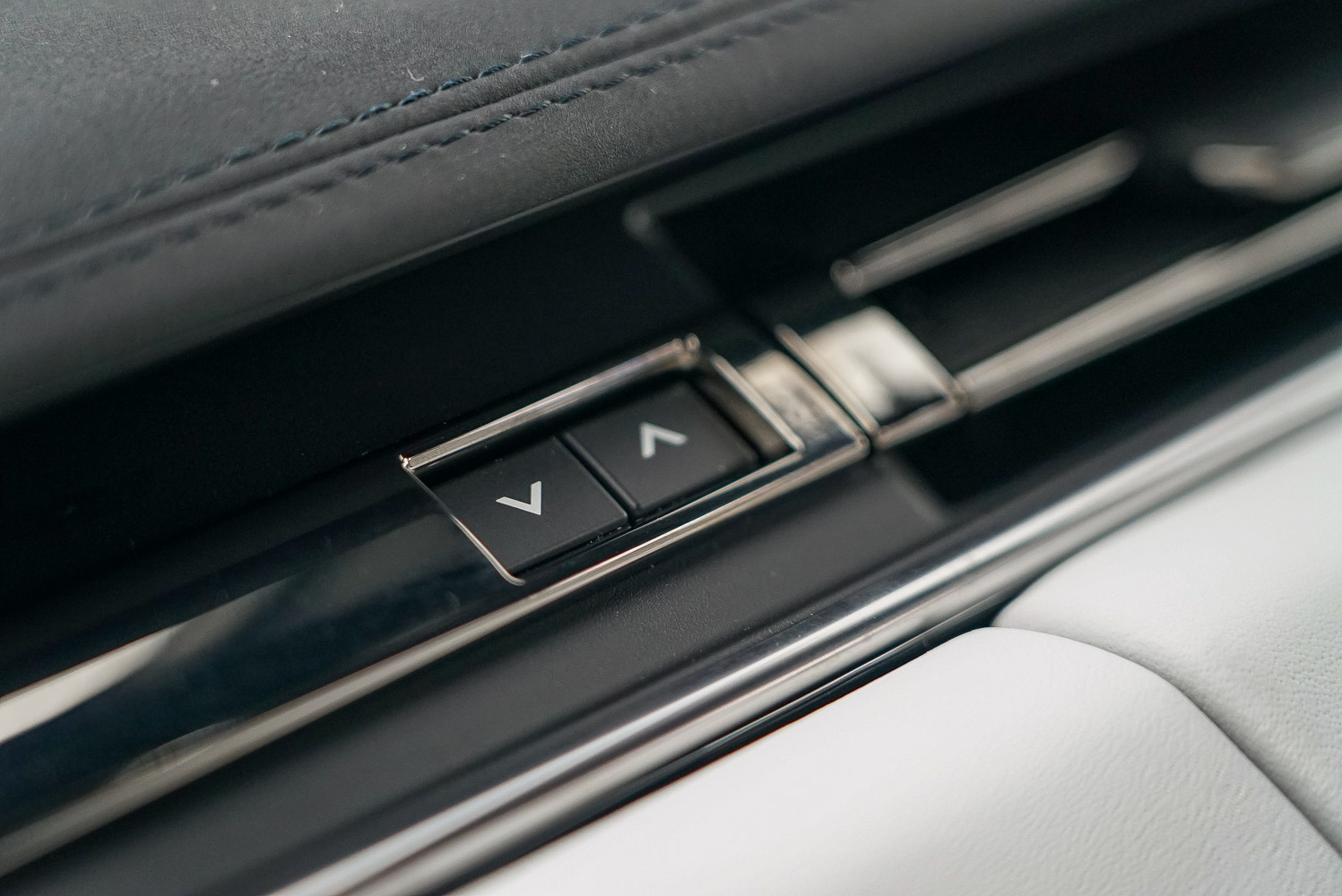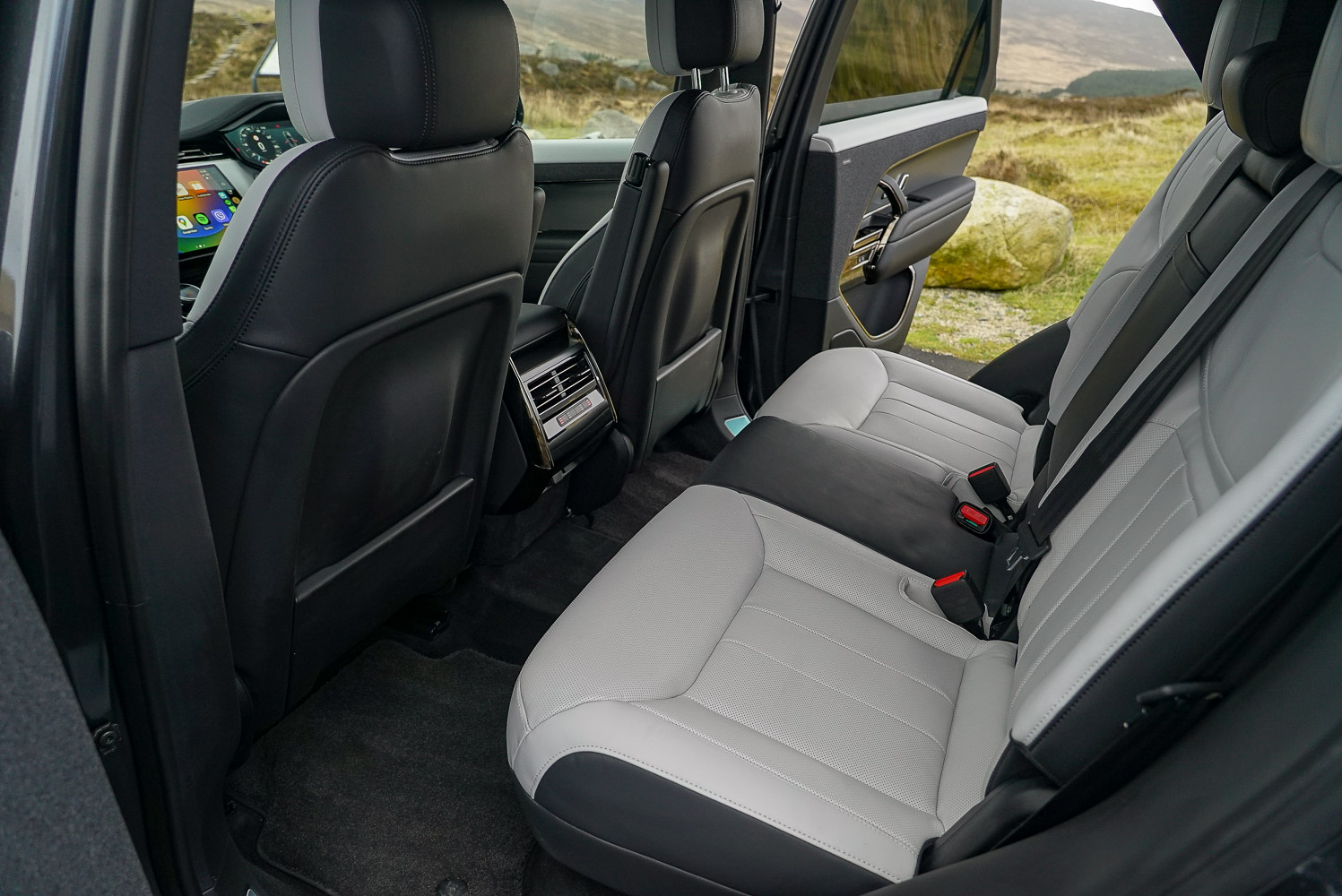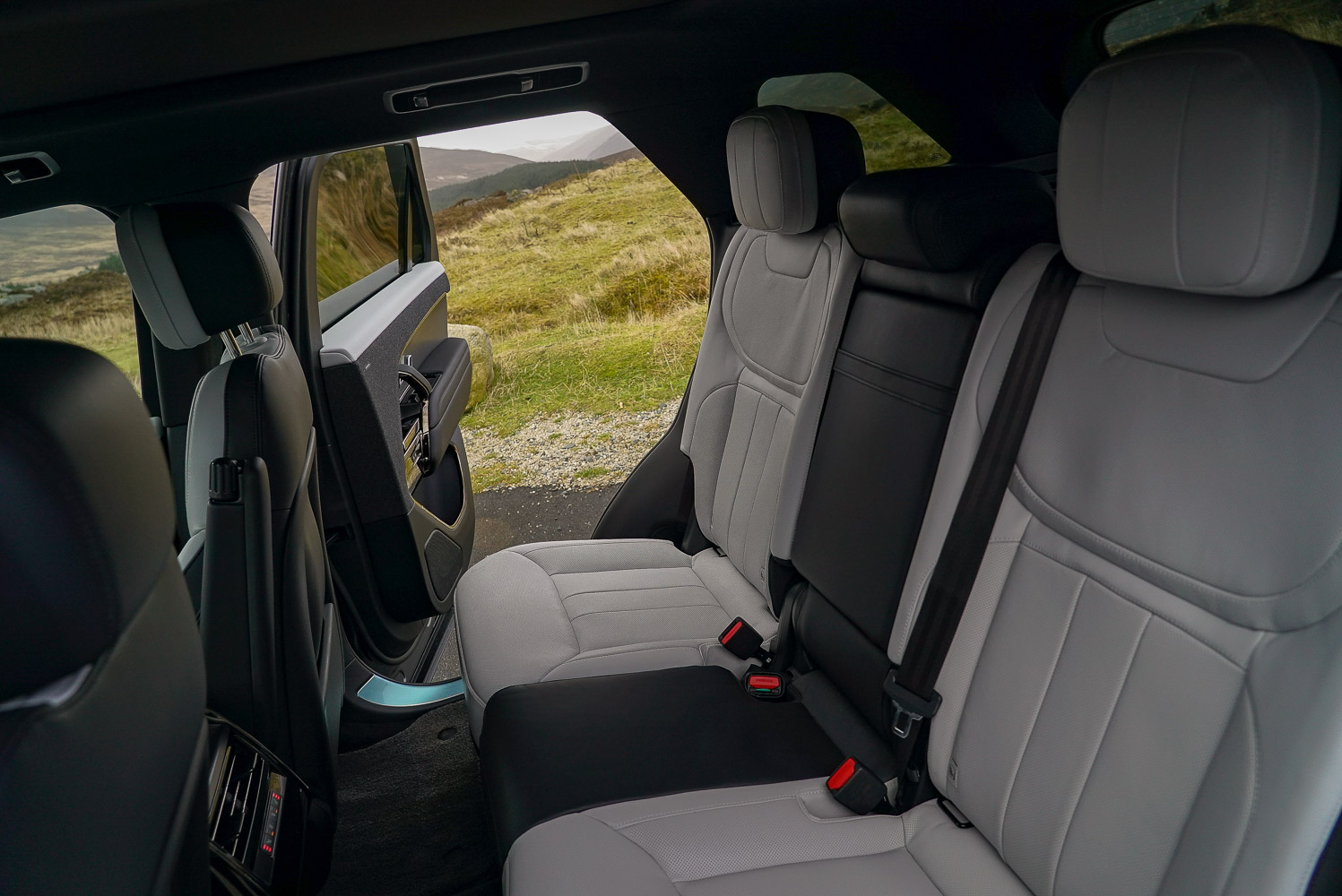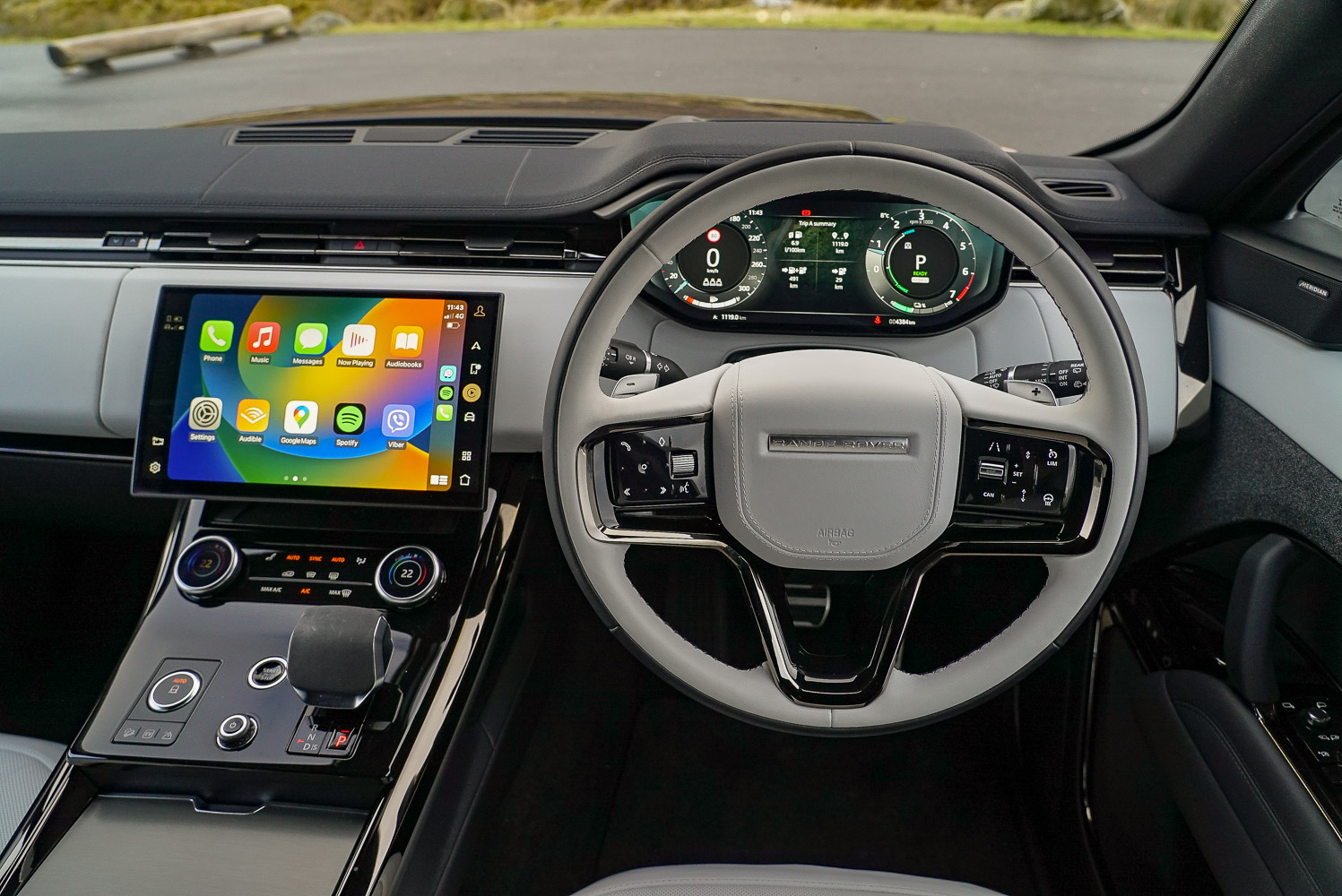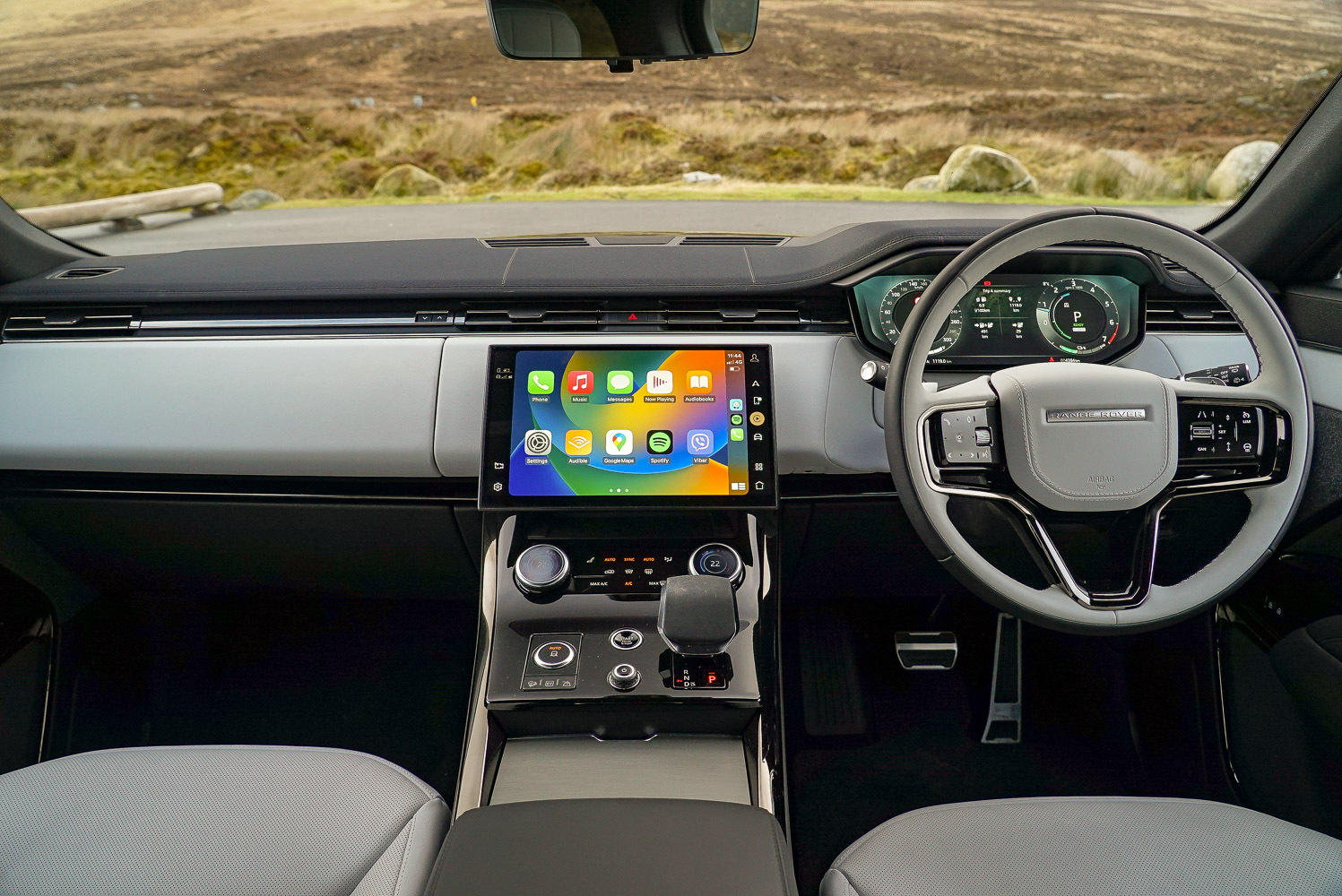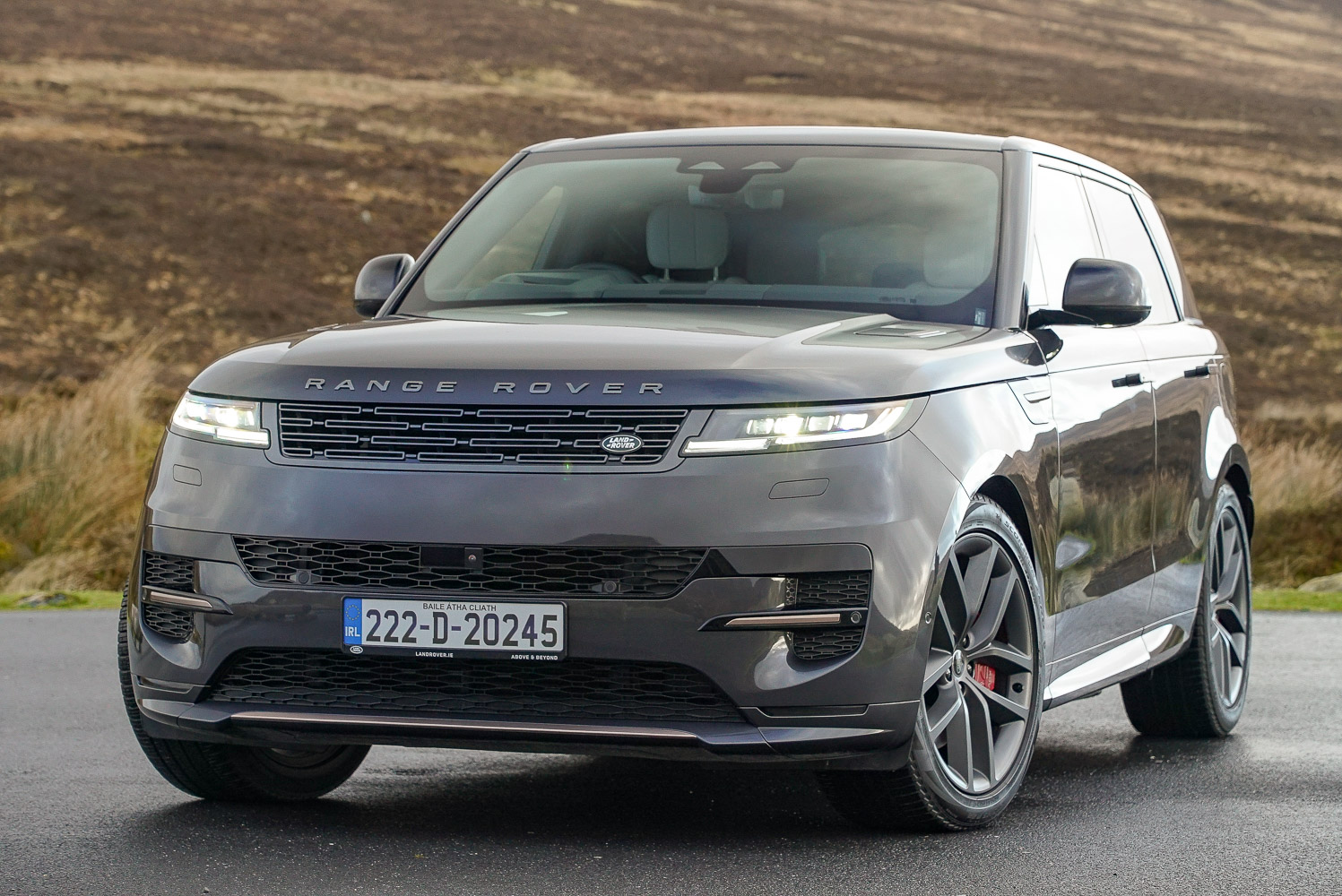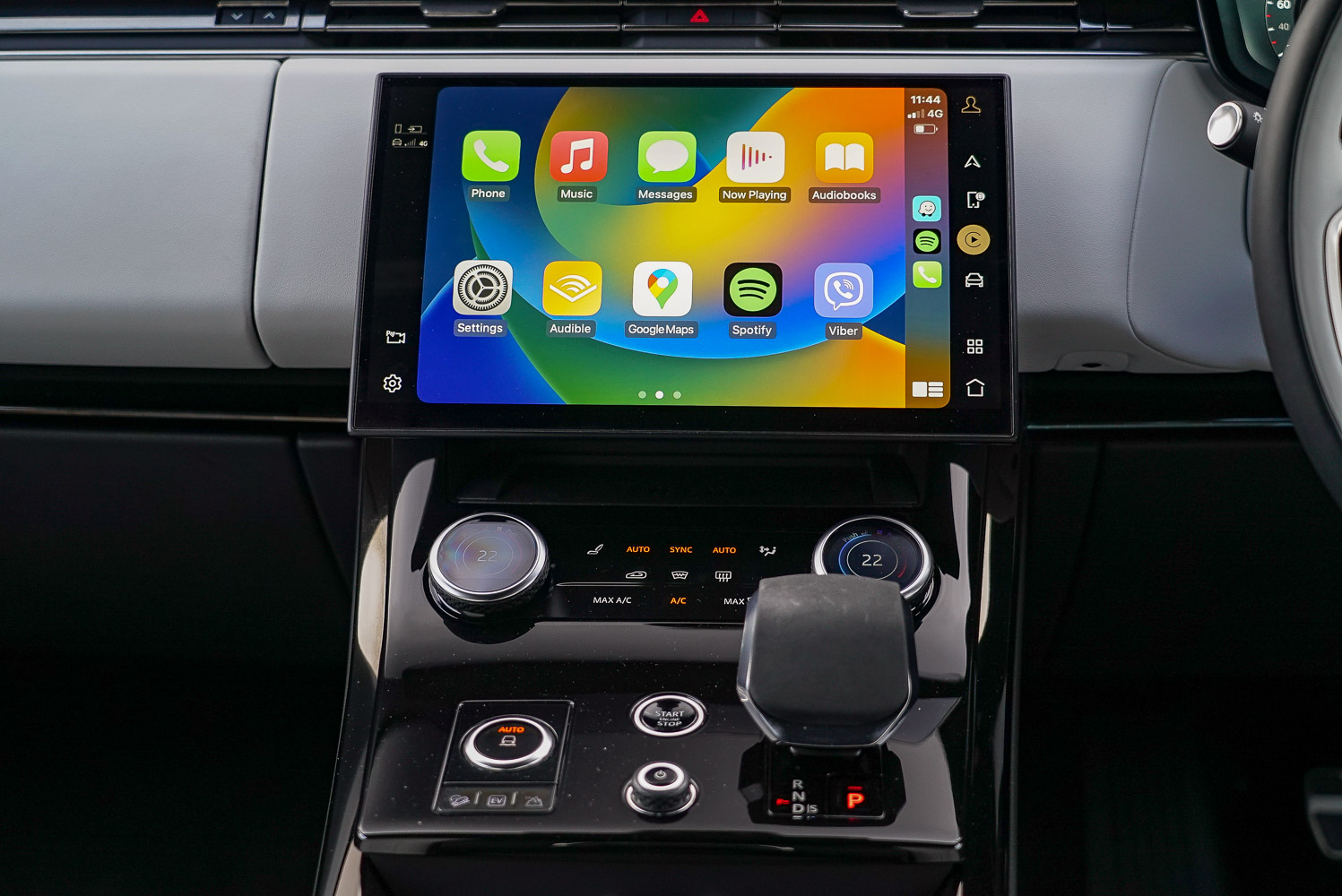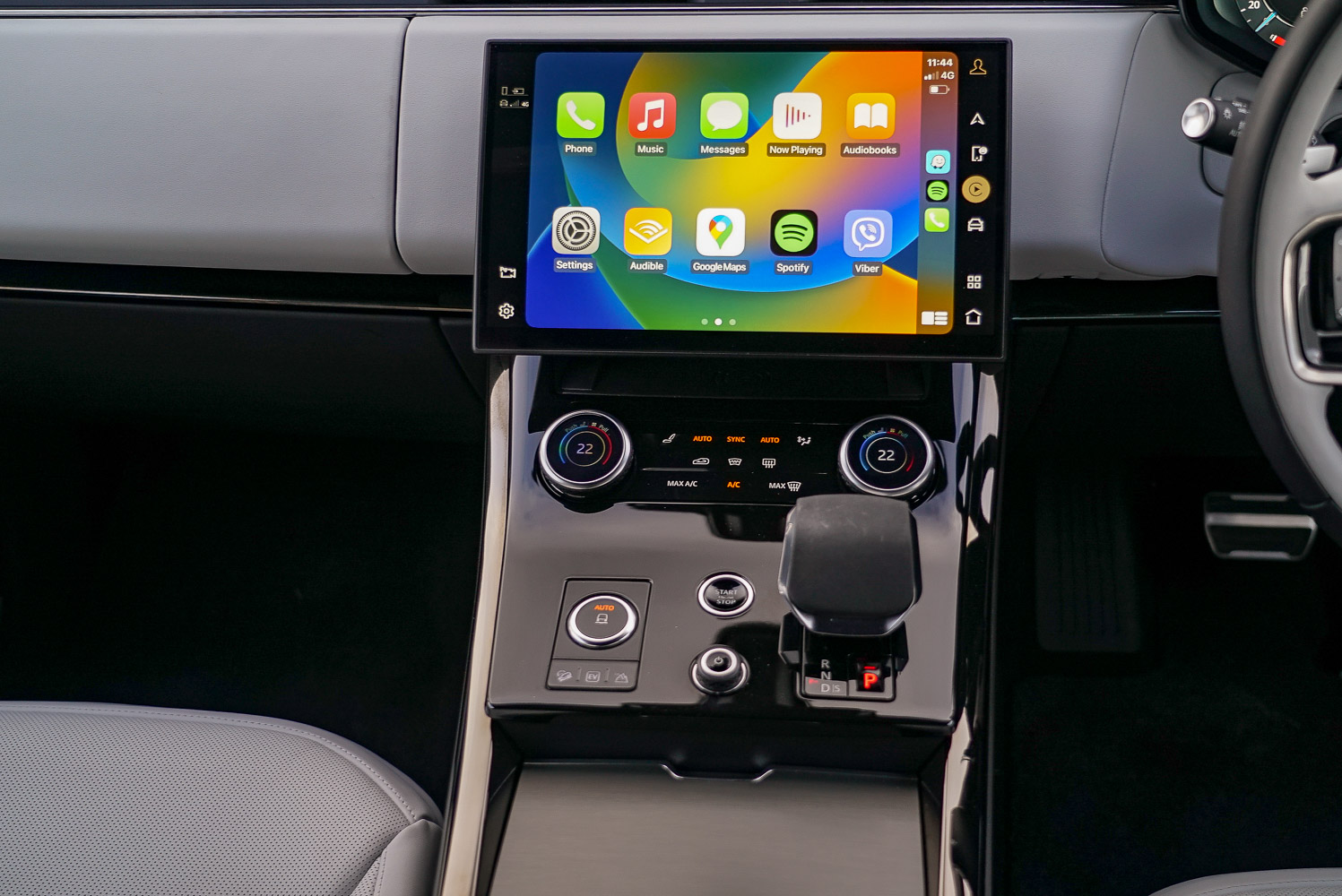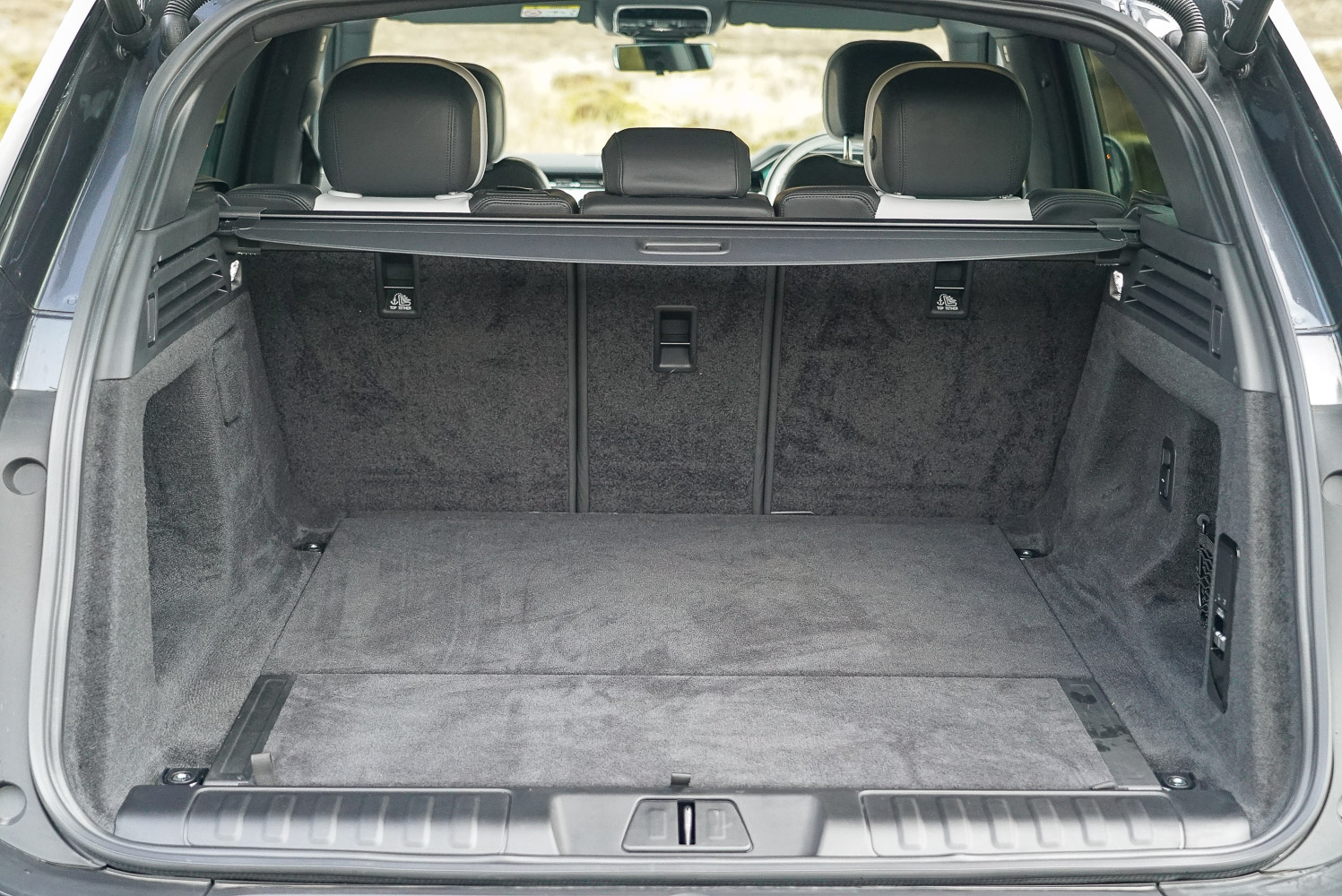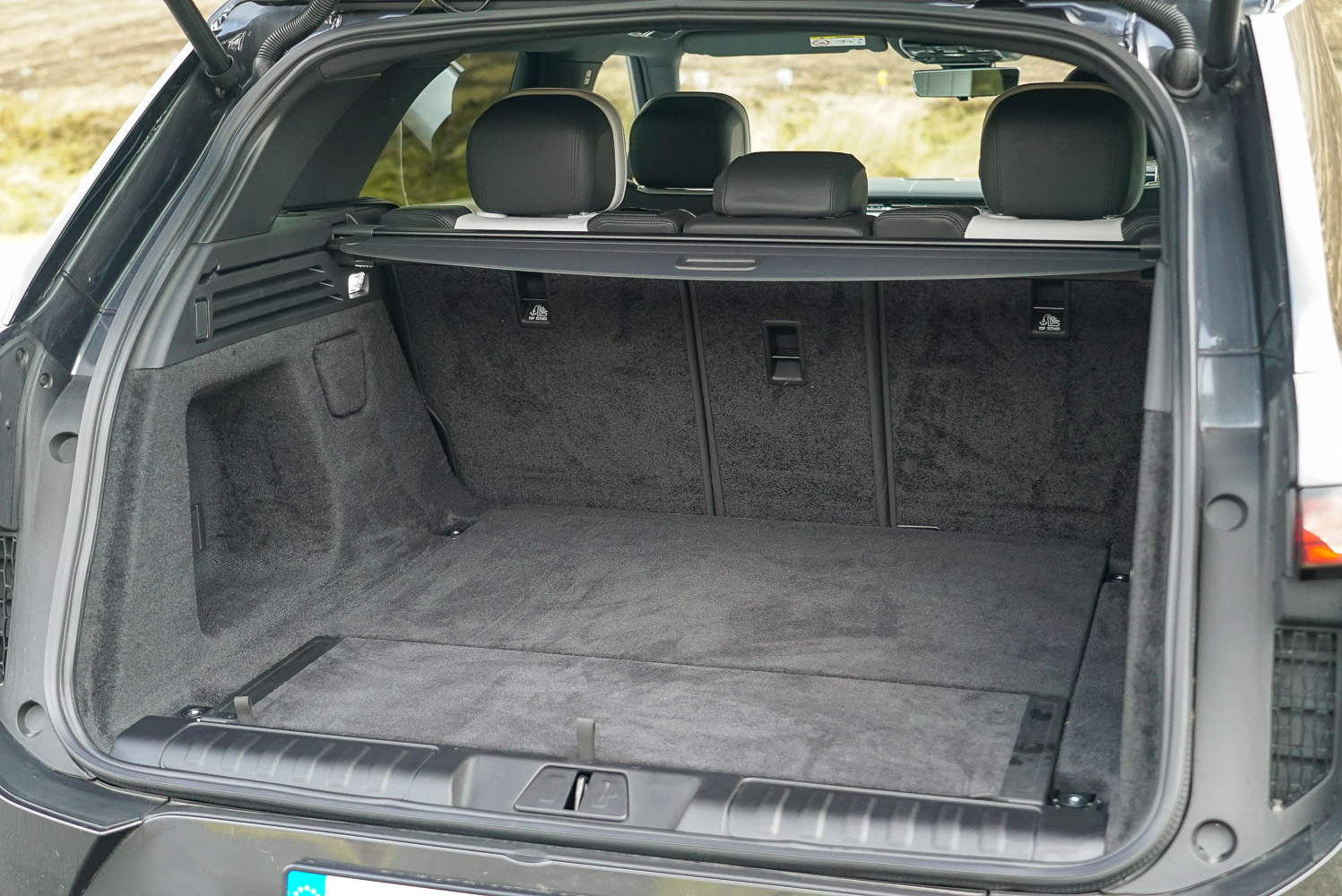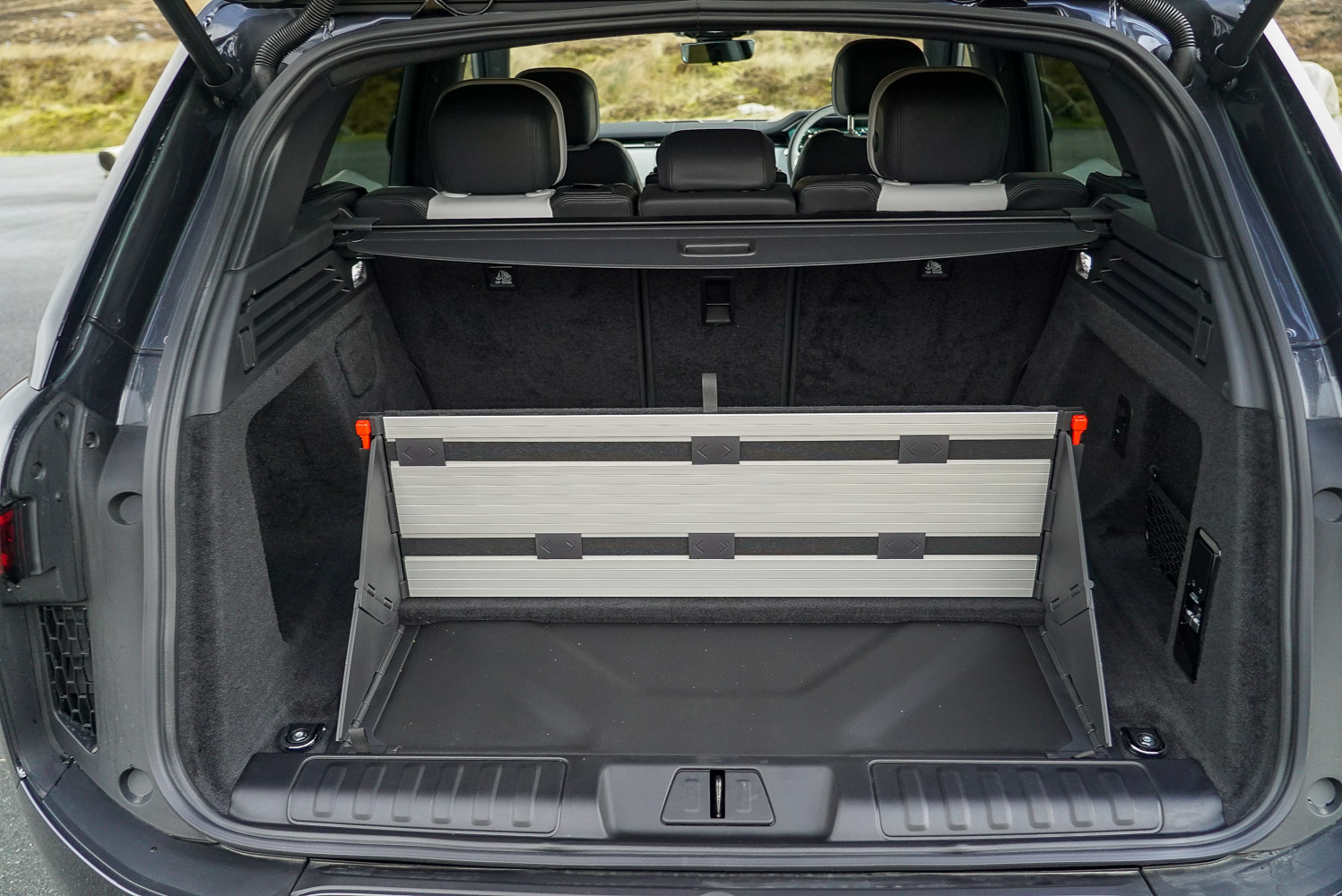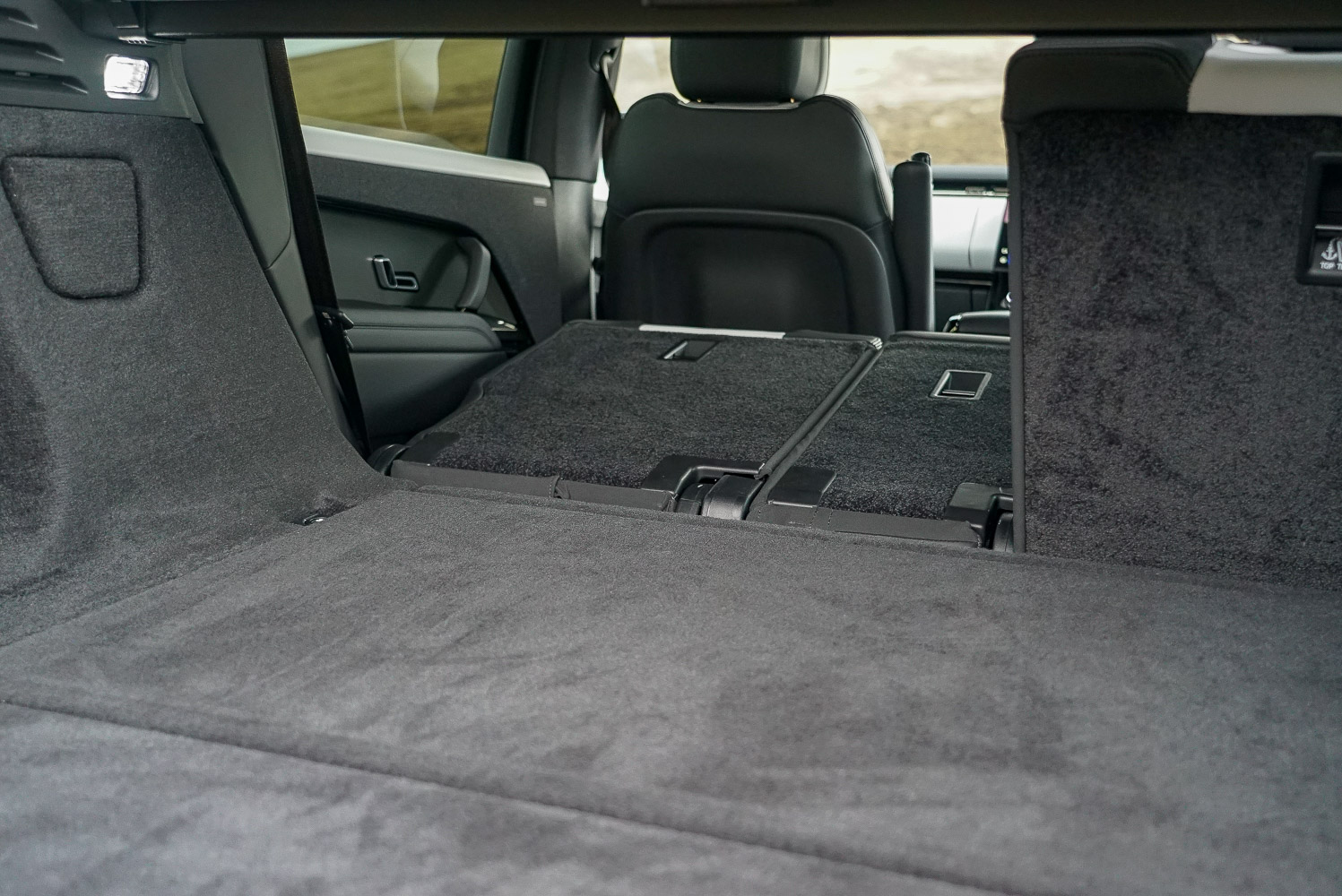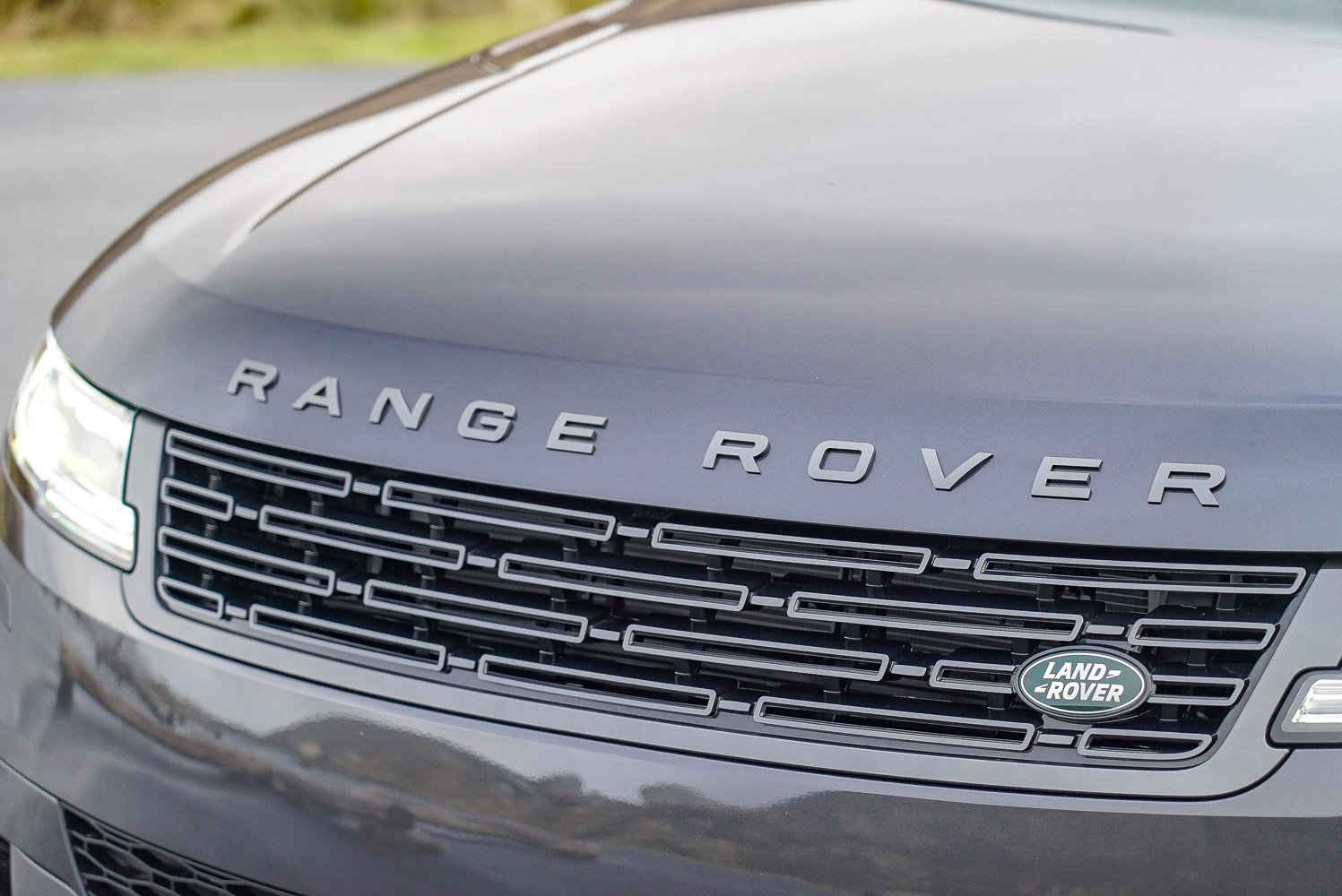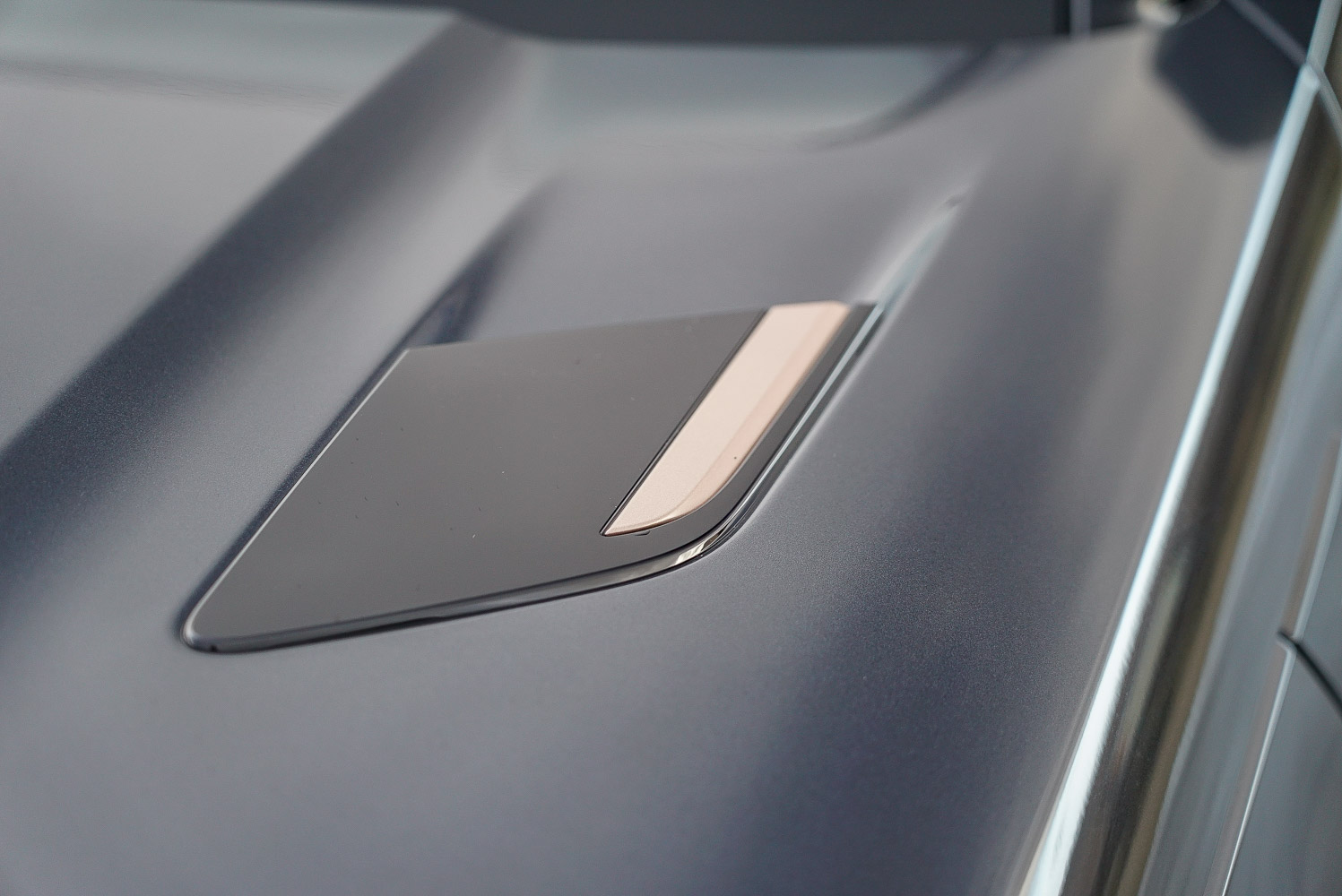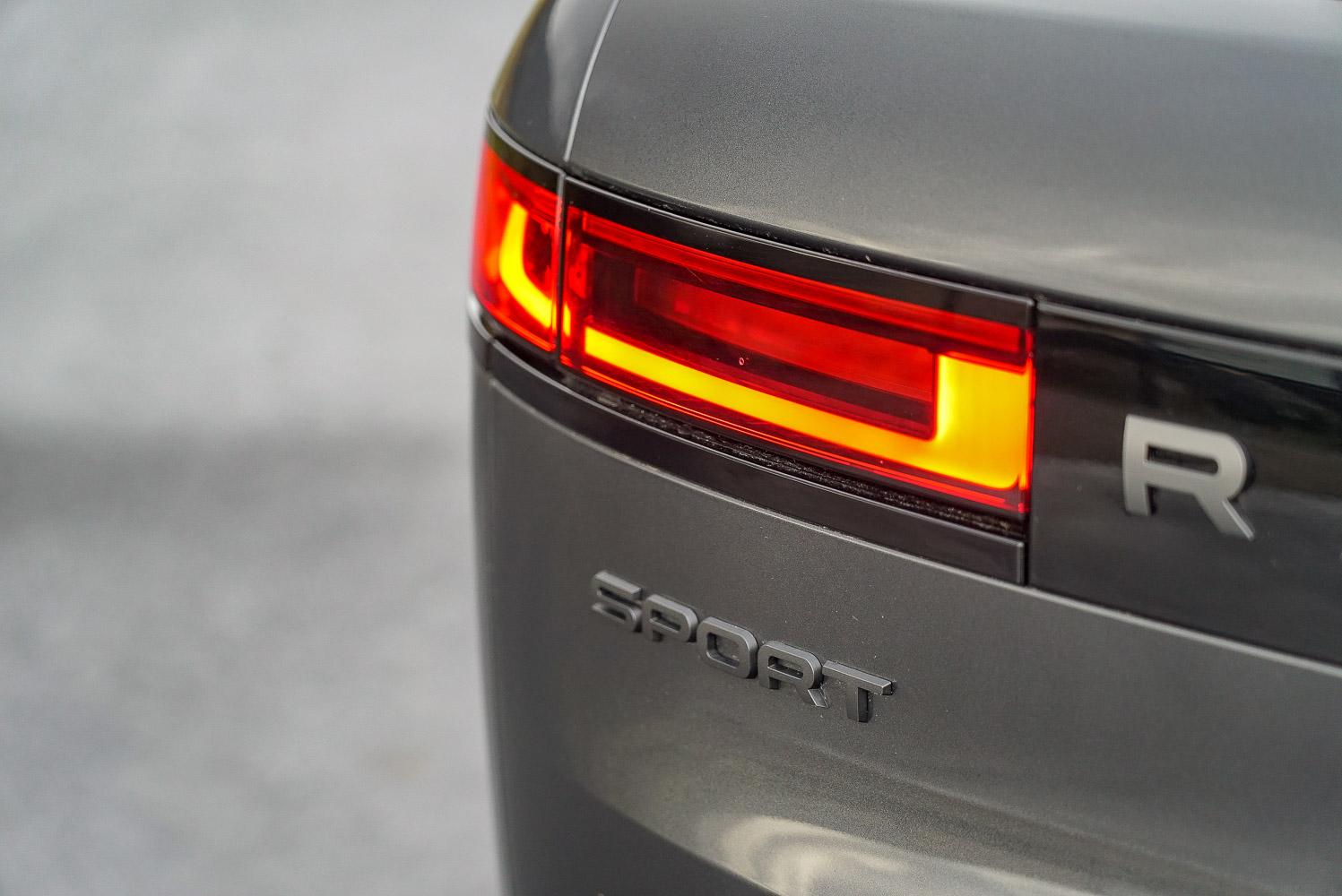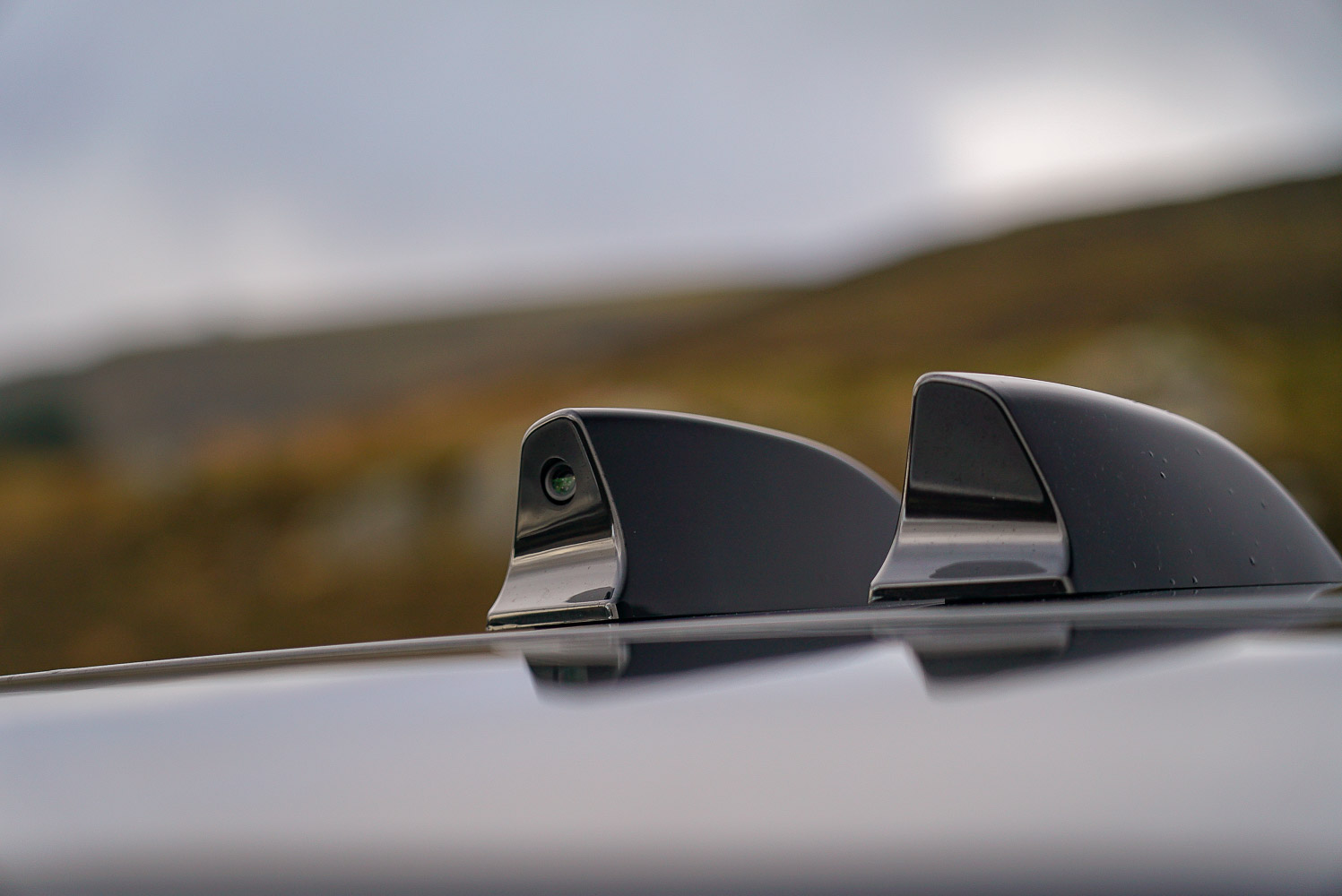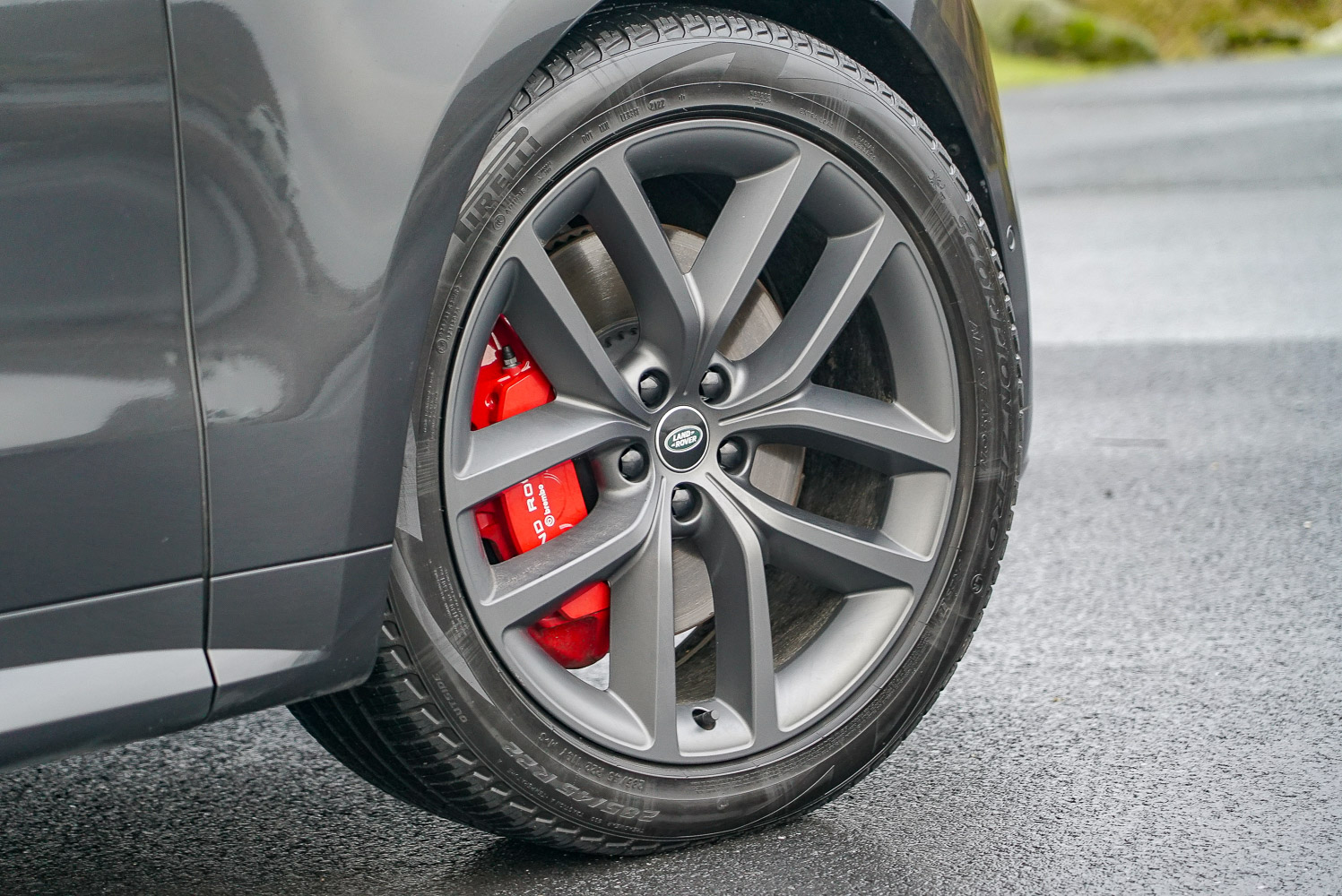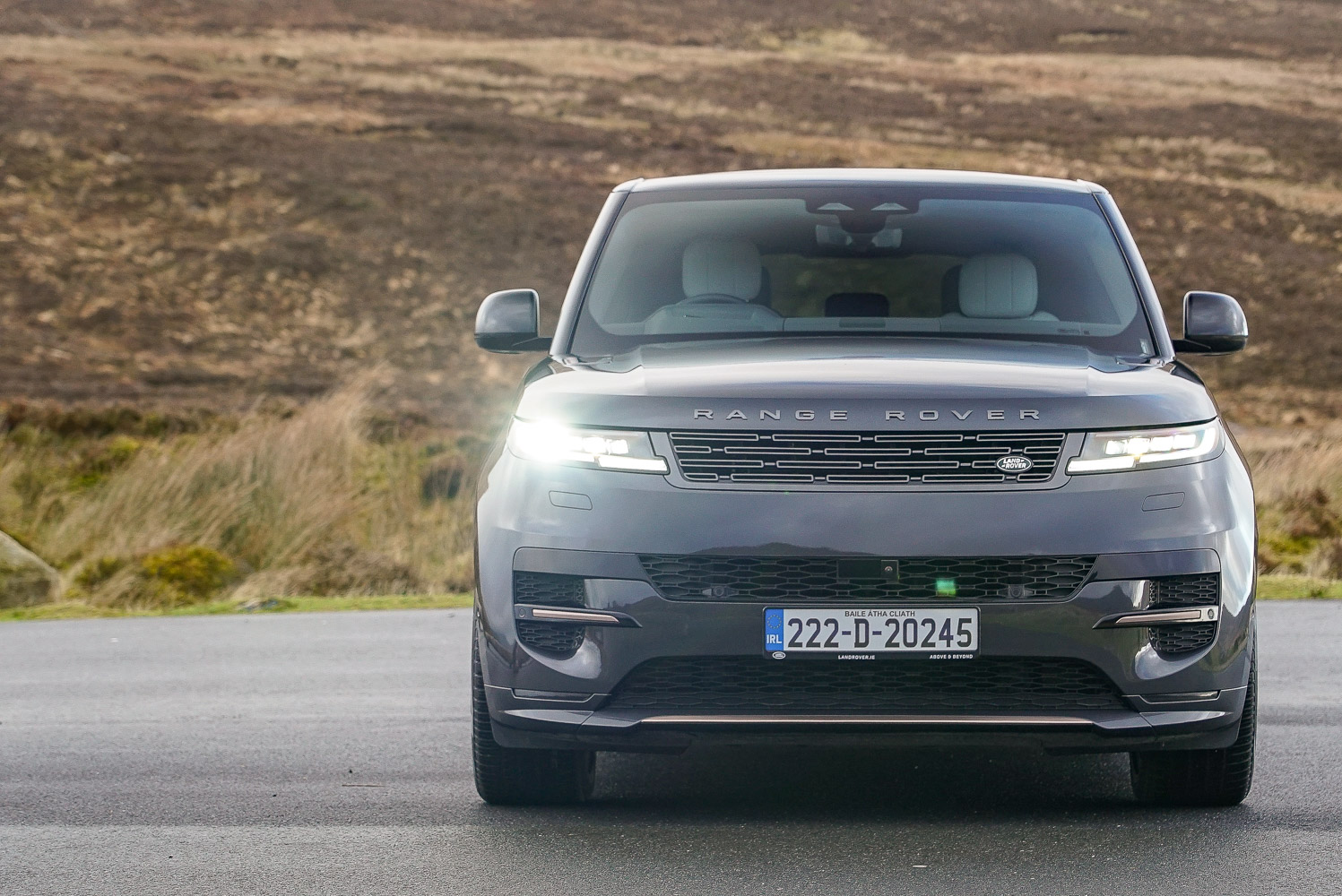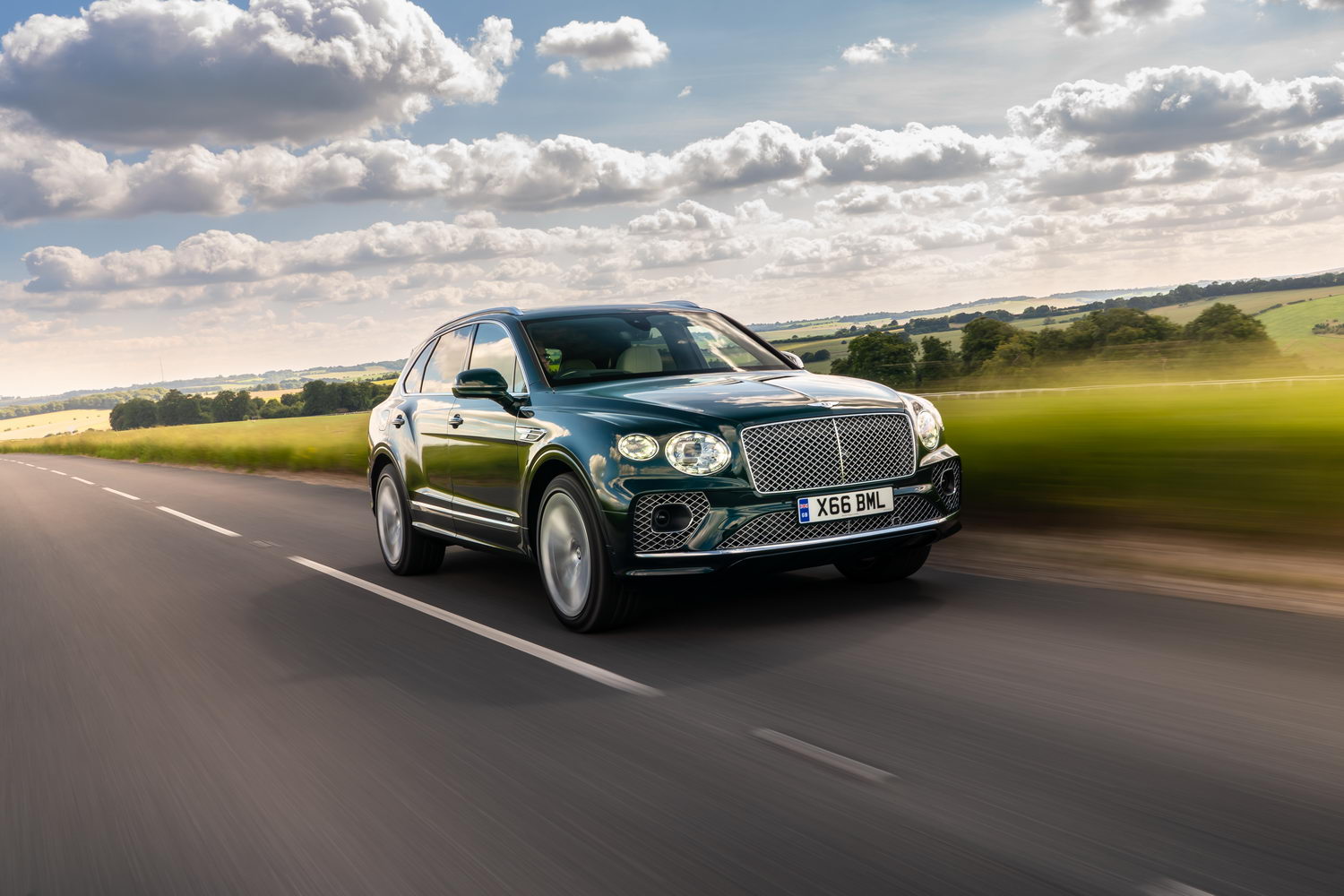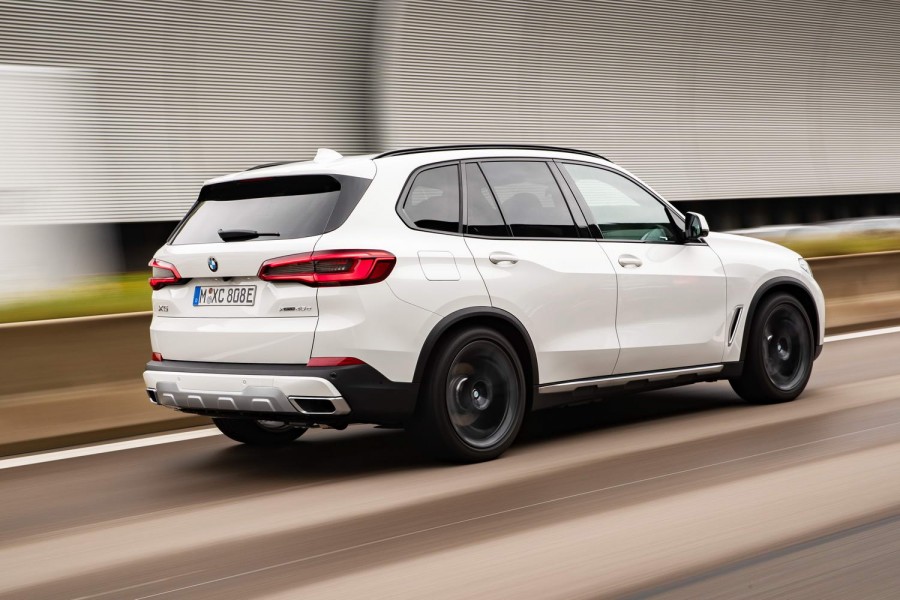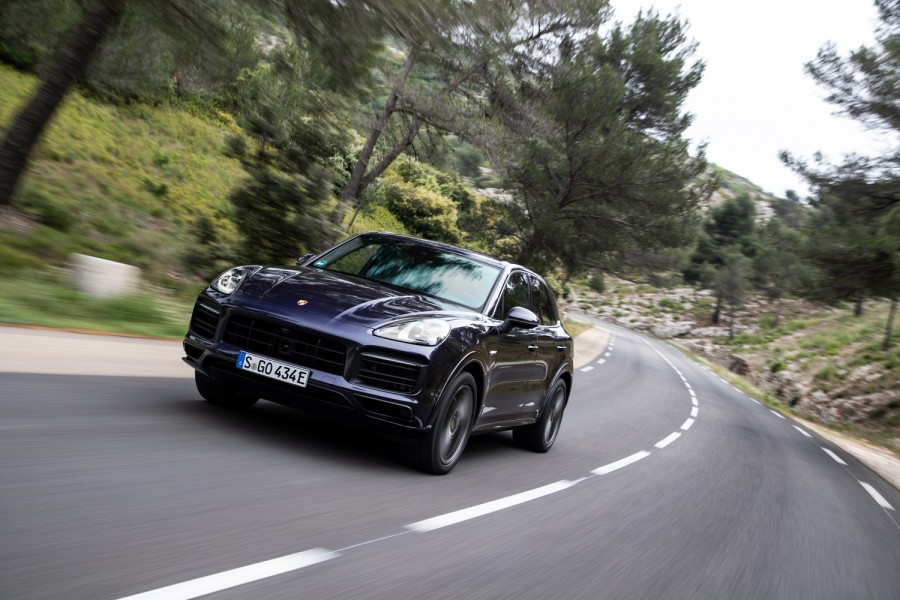Range Rover Sport overview
For the third generation Range Rover Sport, Land Rover has really stuck to the epithet that bigger is better. As before, it's based on the same platform as the latest Range Rover, and that means the Sport has grown in every direction, since it's nearly 10cm longer, 1cm taller and fractionally wider than its predecessor. We say fractionally wider, but this SUV still measures in at more than two metres wide, so it's no shrinking violet.
From the outside, the Range Rover Sport is clearly an evolution of what's gone before. It has been given a smoother finish almost to the extent that it seems quite featureless - the door handles are now flush fitting, the lights are slender and the rear number plate now sits low in the bumper, with a black insert stretching between the taillights. This latter feature is one of the few parts that easily differentiate the Range Rover Sport from the larger Range Rover.
Despite the growth spurt, one option that's no longer available is a seven-seat upgrade. It's a no-go in the plug-in hybrid model tested here because of the location of the drive battery, but Land Rover has seen fit to omit this option from the rest of the range, too.
As its name suggests, the Sport is a sharper alternative to the luxurious Range Rover, and it lives up to this billing by offering a Dynamic drive mode on all models. This helps the Range Rover Sport to compete against cars such as the Porsche Cayenne, Maserati Levante and sportier versions of the Audi Q7/Q8, BMW X5 and Mercedes GLE. It's also likely to be on the shortlist of potential Tesla Model X buyers.
One car that the Range Rover Sport isn't meant to compete against is the Range Rover itself. The full-sized model is geared towards luxury, so there's more space inside, a more luxurious ride and plusher materials, while its starting price is around €24,000 higher.
The Range Rover Sport model range
Irish prices for the Range Rover Sport start from €114,150, and the range comprises Dynamic SE, Dynamic HSE and Autobiography trims, while the First Edition is a limited-run model that's available at launch.
Whichever version you choose, you'll get a lot of equipment as standard. Air suspension is fitted along with Land Rover's latest Terrain Response 2 suite of off-road electronics (which also includes a Dynamic on-road setting) and an eight-speed automatic gearbox. There are pixel LED headlights, LED taillights, 21-inch alloy wheels and heated, power folding and dimming mirrors, while a range of options are available to personalise the exterior.
Inside, heated leather seats with 20-way adjustment are fitted up front, there's two-zone climate control and a 13.1-inch touchscreen system with Land Rover's latest Pivi Pro infotainment. This features online connectivity with Amazon Alexa voice control, wireless Apple CarPlay and Android Auto, plus a Meridian sound system. Other kit includes adaptive cruise control with steering assist and a low-speed off-road mode, rear collision monitoring and occupant protection assist.
On the subject of safety, the Range Rover Sport achieved the full five stars in the Euro NCAP ratings, with 85 per cent scores on adult and child occupant protection and 82 per cent for 'Safety Assist' thanks to its large suite of driver assistance systems. It managed 69 per cent for protection of vulnerable road users despite its high front end, thanks in part to its ability to automatically avoid collisions with pedestrians and cyclists in "most test scenarios".
Dynamic HSE adds luxuries such as digital LED headlights, 22-inch wheels, 22-way heated and ventilated seats with even softer leather trim, a 3D surround sound Meridian hi-fi, head-up display and park assist with a remote parking function included.
Autobiography is even plusher still, adding equipment such as a black contrast roof incorporating panoramic glass, uprated interior lighting, four-zone climate control, a massage function for the front seats and electric adjustment for the outer rear seats.
At the top of the range, the First Edition features all of the kit you get with Autobiography, but also adds privacy glass and 23-inch wheels, as well as exclusive treadplates with First Edition lettering.
In terms of powertrains, what you get depends on which trim you choose, with the Dynamic SE and HSE models available in D300, P400 and P440e guises. The D300 is powered by a 300hp inline-six diesel, while the P400 is the petrol version with a 400hp inline-six, both of which come with mild-hybrid tech. The P440e is the plug-in hybrid as tested here, which combines a petrol inline-six with an electric motor and 31.8kWh battery for a total maximum output of 440hp and an official all-electric range of 114 kilometres. It's also the cheapest powertrain option of the three, undercutting the diesel model by almost €45,500 and the petrol by €52,000 in Dynamic SE trim.
The Autobiography and First Edition feature the same diesel and plug-in hybrid powertrains, but with more power in D350 and P510e guises. The plug-in model has an official electric range of 113km. Finally, the First Edition is also available with a BMW-sourced 4.4-litre twin-turbocharged petrol V8. This P530 model is a precursor to the flagship SVR model that's due later in 2023, and delivers a 0-100km/h time of 4.5 seconds. It's also the most expensive Range Rover Sport for sale, weighing in at €227,360.
The Range Rover Sport interior
The Range Rover Sport is a big, tall car, but climbing aboard is made easier for even the smallest passengers, thanks to the car's air suspension. There's an Access height that lowers the car by 50mm when stationary, so there's less clambering for kids to get in.
Once on board, the Range Rover Sport does a good job of emulating the larger Range Rover for luxury. Plush leather, tactile switchgear and high-quality screens feature throughout the car, and everything feels very solidly put together. Land Rover's latest Pivi Pro infotainment system is great to use, and the 13-inch display has plenty of space to incorporate all of the functions on one screen, so you don't have to go fumbling through sub menus when you're on the move.
Thankfully, the climate controls are on a separate panel below the main screen, too, and the cleverly-designed rotary dials can be used to adjust temperature or seat heating, while the touch-sensitive buttons between them are simple to use.
There's a high-resolution digital display for the driver's instrumentation and it can be set to have as much or as little info as you want via the multifunction controls on the steering wheel.
Thanks to the Range Rover Sport's size, it means there's loads of space inside. There's lots of head- and legroom throughout, the seats are all comfortable, and it also means that there's plenty of cabin storage. The high-set centre console has a tray ahead of the drive selector, while there are cup holders behind it, too. The armrest also opens to reveal a deep central storage bin that has space for large bottles inside. Topping it off is a twin glovebox and deep door bins.
In the back, the seat layout is geared towards the comfort of the two outer seats, because the middle chair is more of a high perch. There are vents and climate controls back there, while the seats themselves fold electrically to create more boot space.
The boot is generously sized, although the location of the hybrid drive battery under the floor means there's no additional storage to be found below. The hinged boot floor does at least offer a partition to help stop smaller items from rolling around. Access is good, too, thanks again to the lowering of the standard-fit air suspension and a powered tailgate.
The Range Rover Sport driving experience
It's on the move where the biggest differences between the new Range Rover Sport and full-fat Range Rover lie, with the former feeling a lot more taut and sportier than the flagship. In fact, the Sport might be a little too firm for some, especially at the rear. Tackle a speed bump, even at slow speeds, and the car shimmies as it clears it, while poor road surfaces also make their presence felt. However, once you're cruising, the Range Rover Sport is utterly brilliant. Double glazing and plenty of sound deadening mean it's supremely quiet at all speeds, although the Range Rover is quieter still.
However, while the Range Rover Sport feels fast and capable, it's hardly engaging, with no communication through the steering and of course a lot of weight to haul around. Land Rover has to be praised for its brake pedal modulation, though, because it's perfect, even with battery regeneration going on in the background.
One area where the Range Rover Sport has an advantage over most rivals is its off-road ability. In reality, hardly any owners are going to scratch the surface of what it's capable of, and the Terrain Response 2 system makes light work of nearly any surface - simply select the type of terrain you're driving over and the system sets the car up for it. The adaptive cruise control's off-road mode can adjust your speed according to your surroundings, too, allowing you to concentrate on steering. This is also made easier with Land Rover's front camera system, which offers a view of the surroundings immediately in front of the car, seeing 'through' the bonnet and with a graphic showing which way the wheels are pointing.
Back on the road, we had an indicated range of 100km from the P440e's fully charged battery. However, while some PHEVs dip into their electric reserves immediately and use them up before switching to petrol power, the Range Rover Sport seemed more measured in its electricity use, using a hybrid of petrol and electric drive as the system saw fit. As a result, we saw a return of 6.9 litres/100km, which is pretty good for a car weighing 2.7 tonnes.
As for charging times, Land Rover says it takes seven hours to fully charge the P440e's battery from a 7kW home wallbox, while a 50kW DC fast charger can top the battery up from 0-80 per cent in around an hour.
Our verdict on the Range Rover Sport
The Range Rover Sport is more of a luxury car than ever before, but it comes at the cost of the driving engagement that was offered by its predecessor. However, few buyers - if any - are likely to care about that very much. The regular Range Rover is still more refined and comfortable, but since prices for that model have crept up, the Range Rover Sport clearly has to fill the void for buyers that can no longer afford the flagship. Irrespective of your reasons for buying, if you're in the market for a Range Rover Sport, then the plug-in hybrid is the one to go for, as it's so much cheaper than the diesel, yet also more powerful and more refined.

